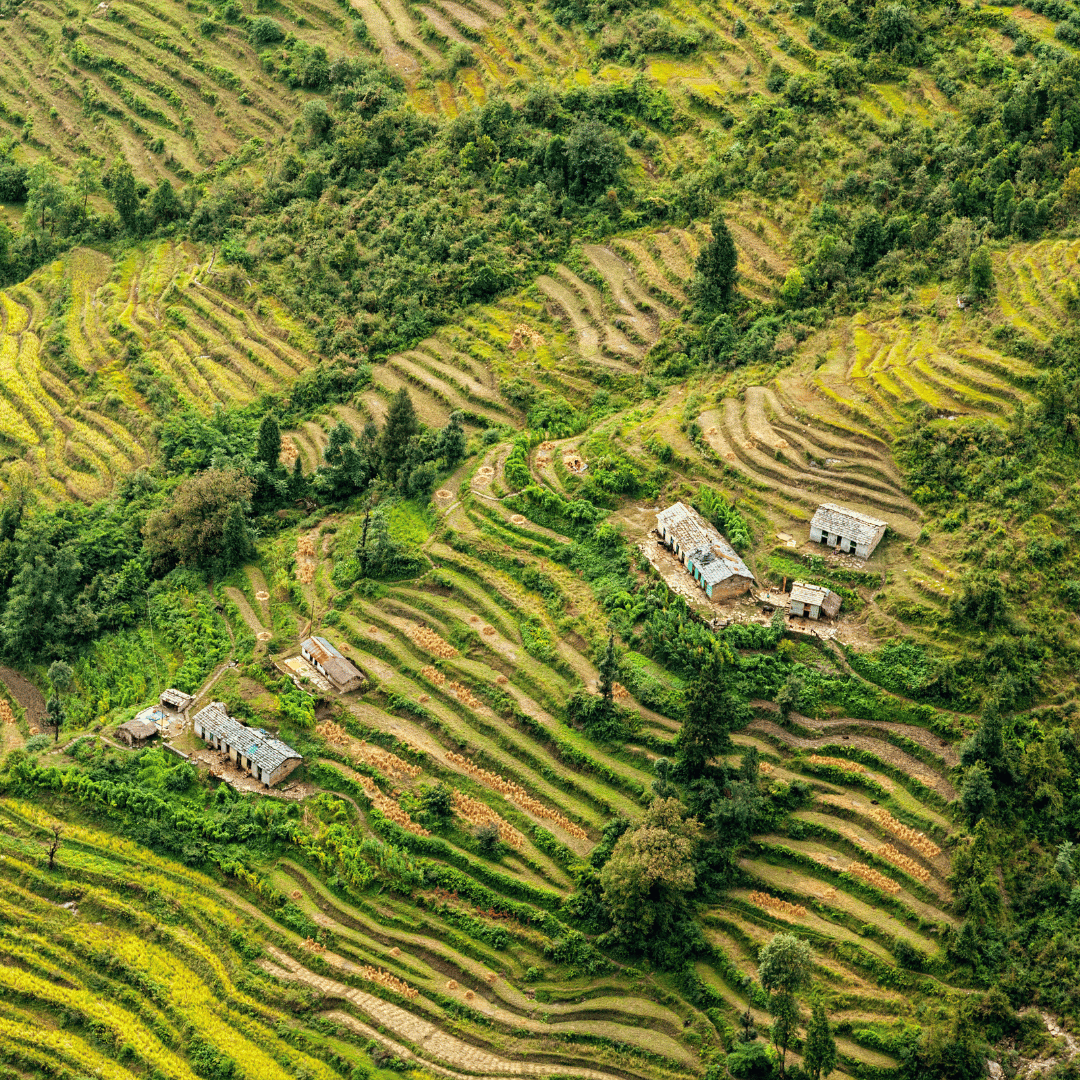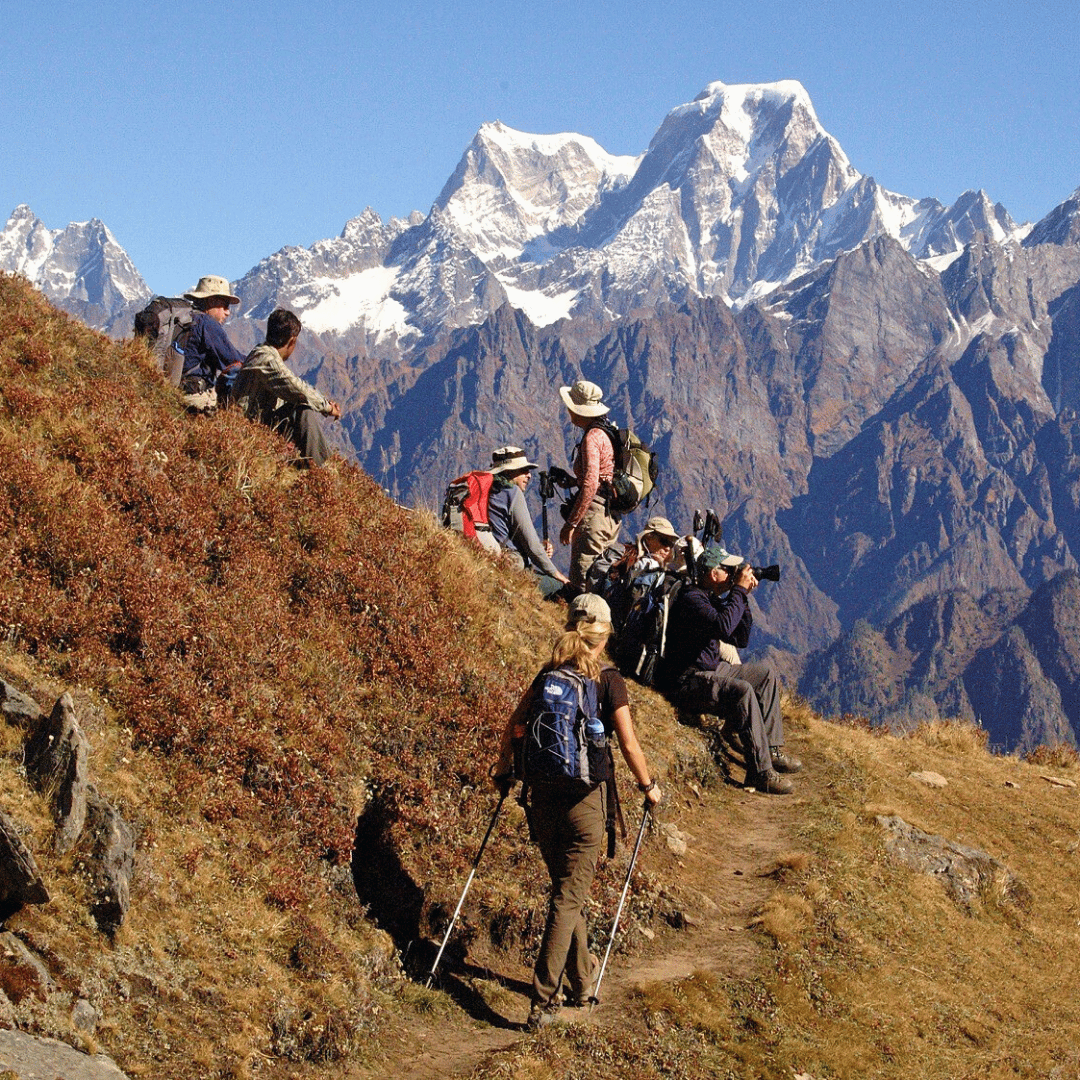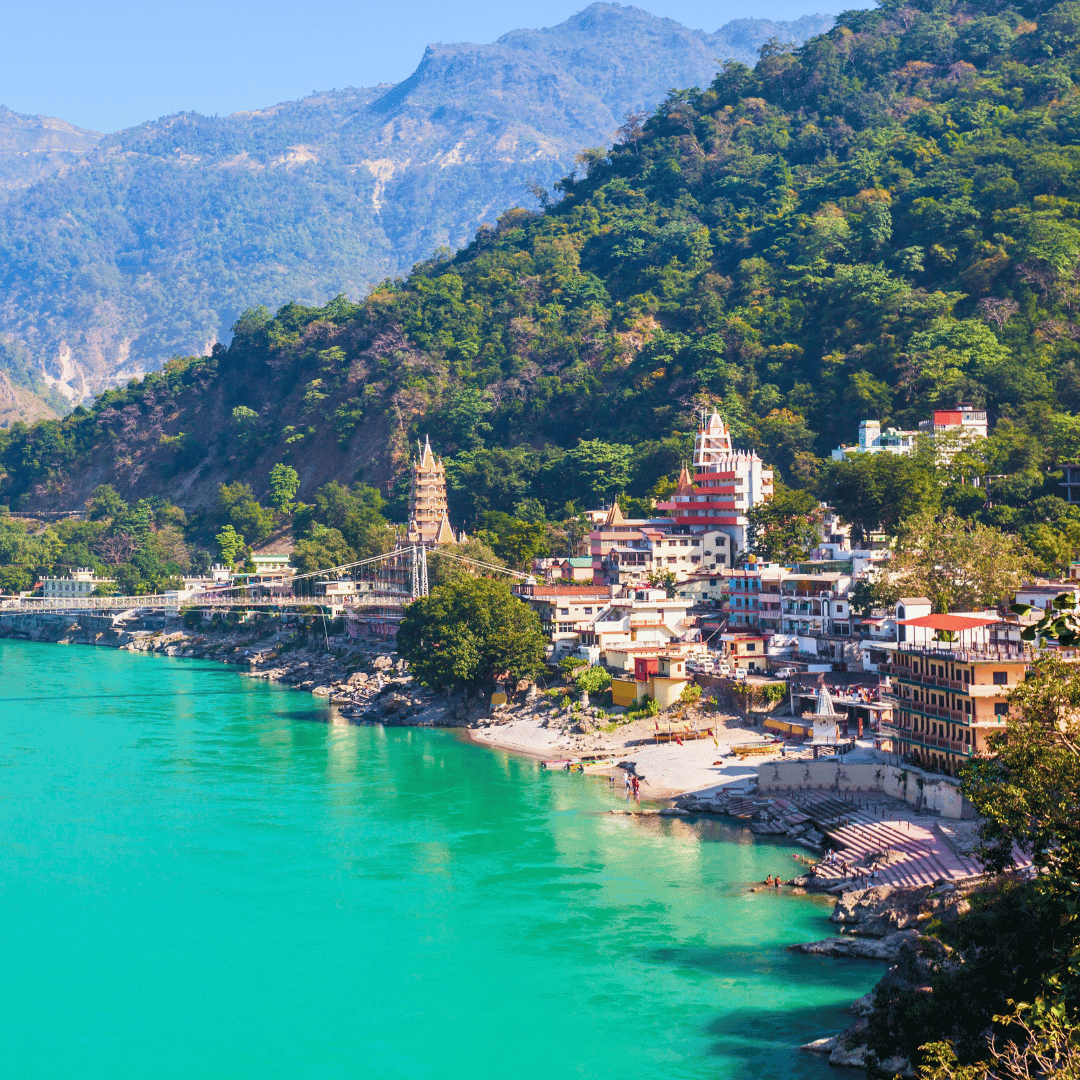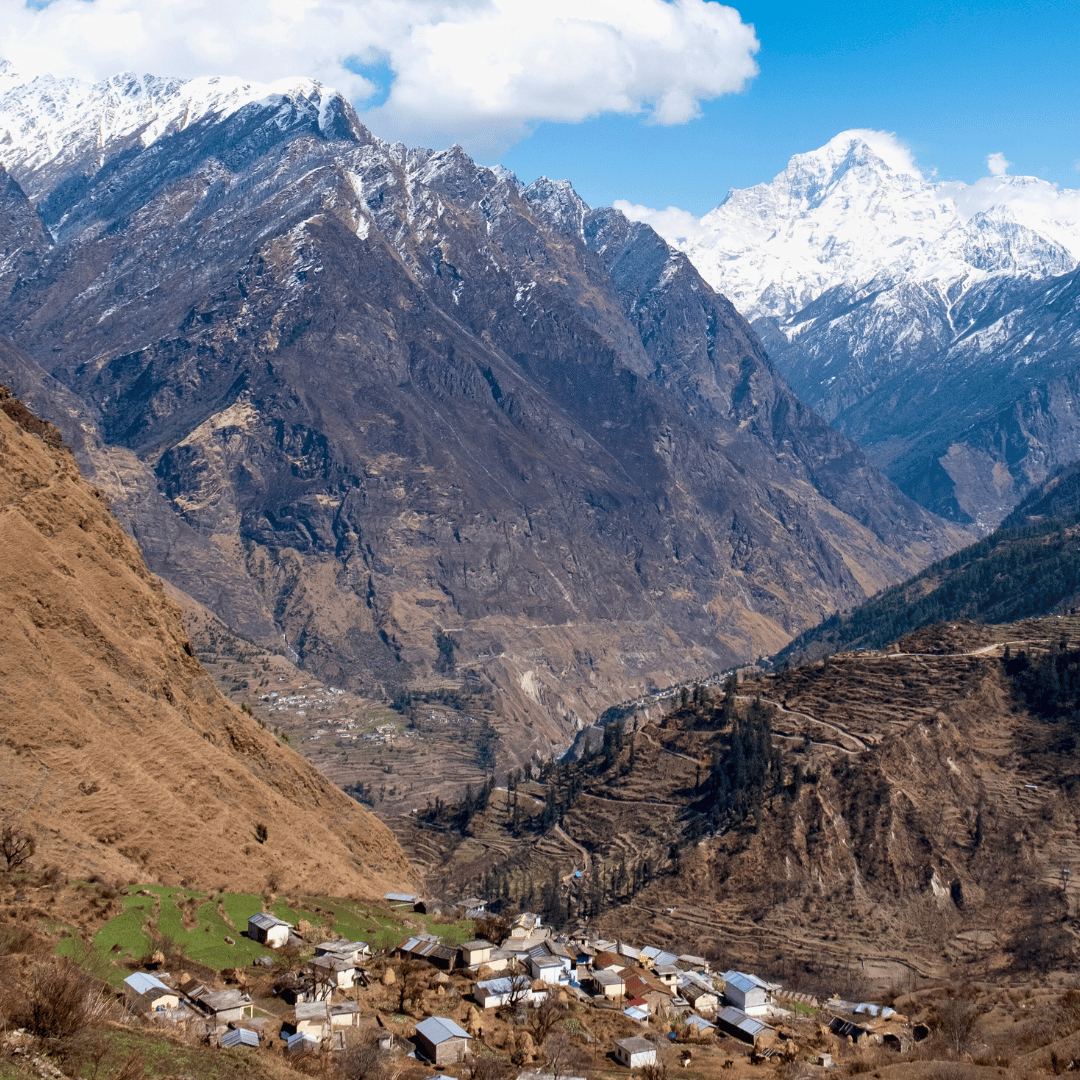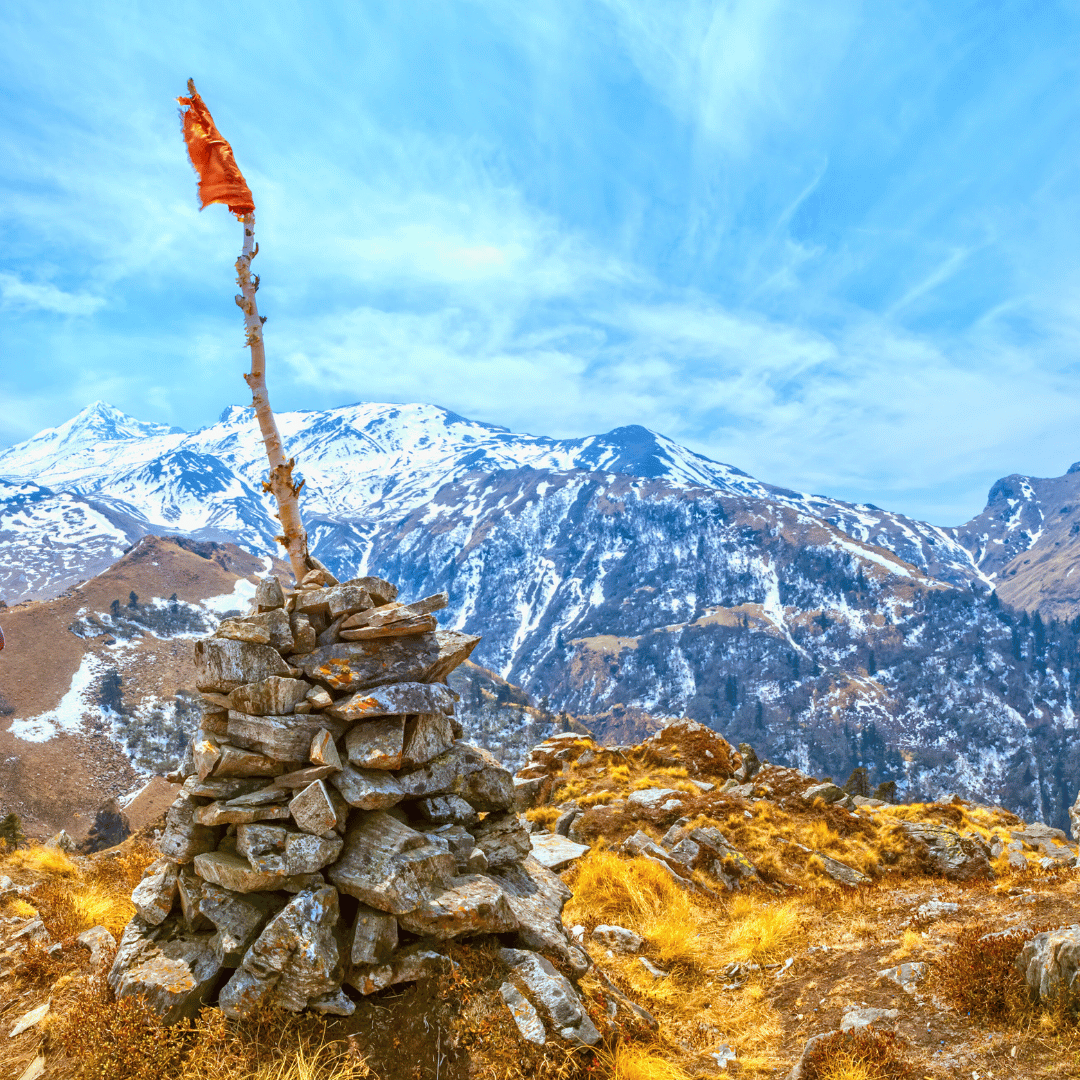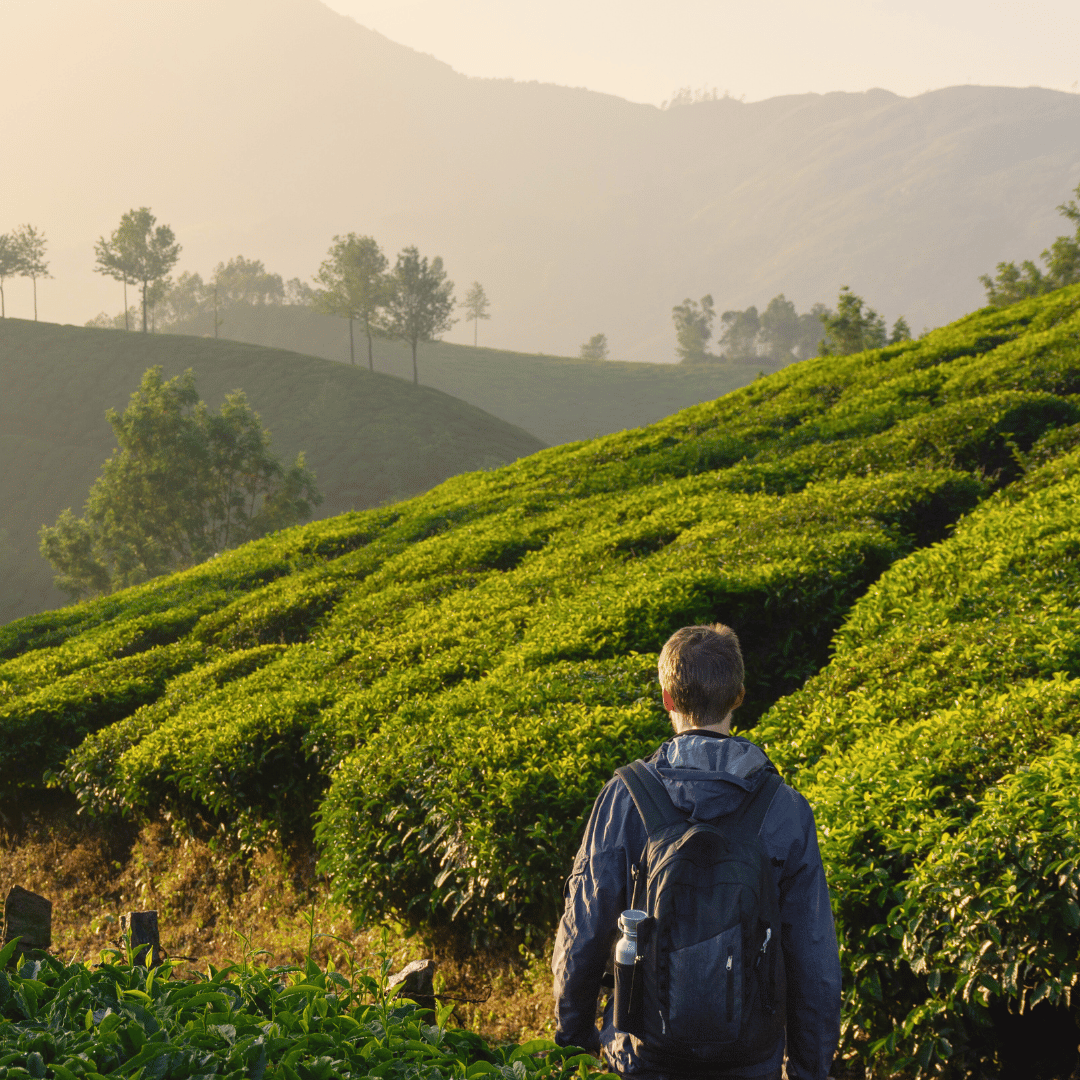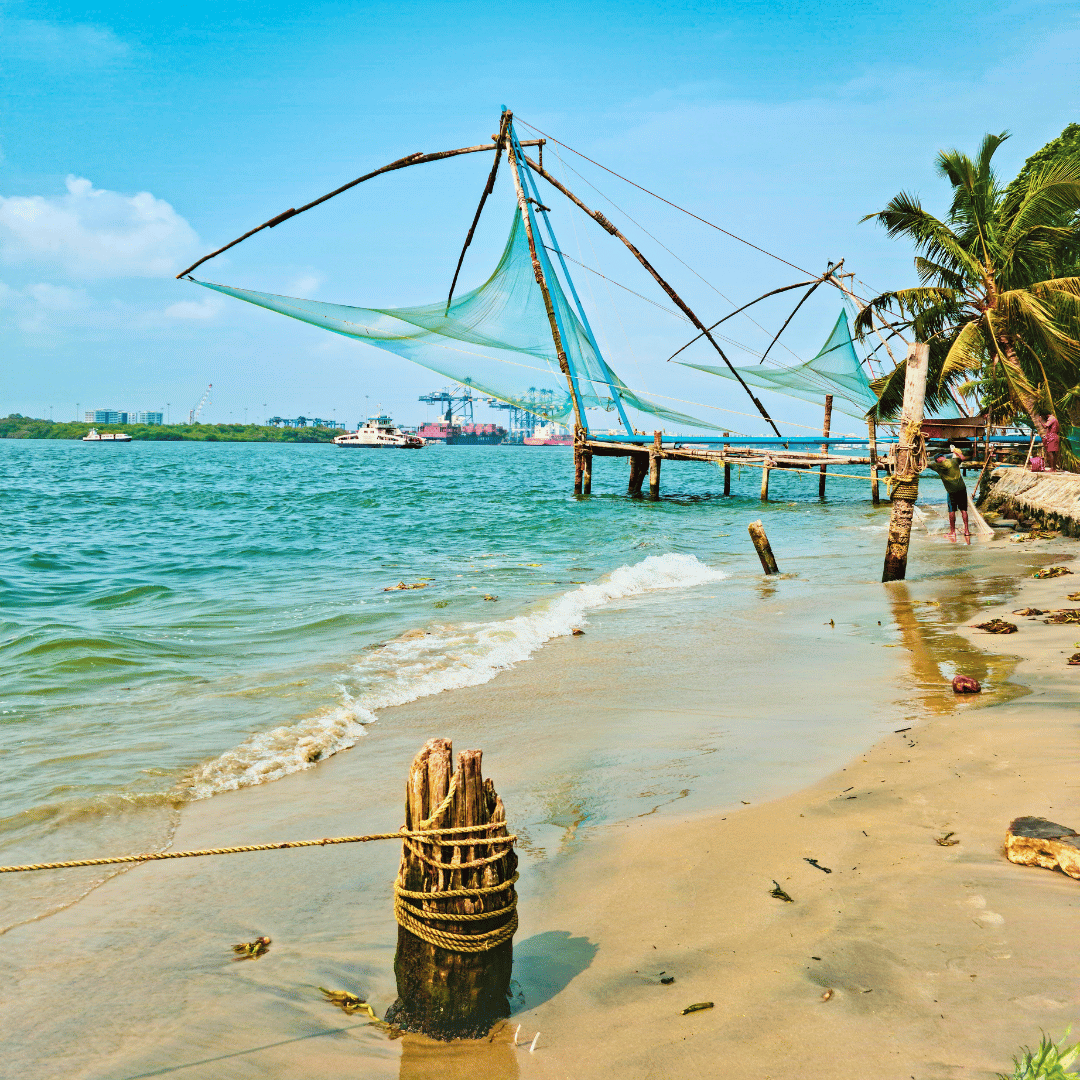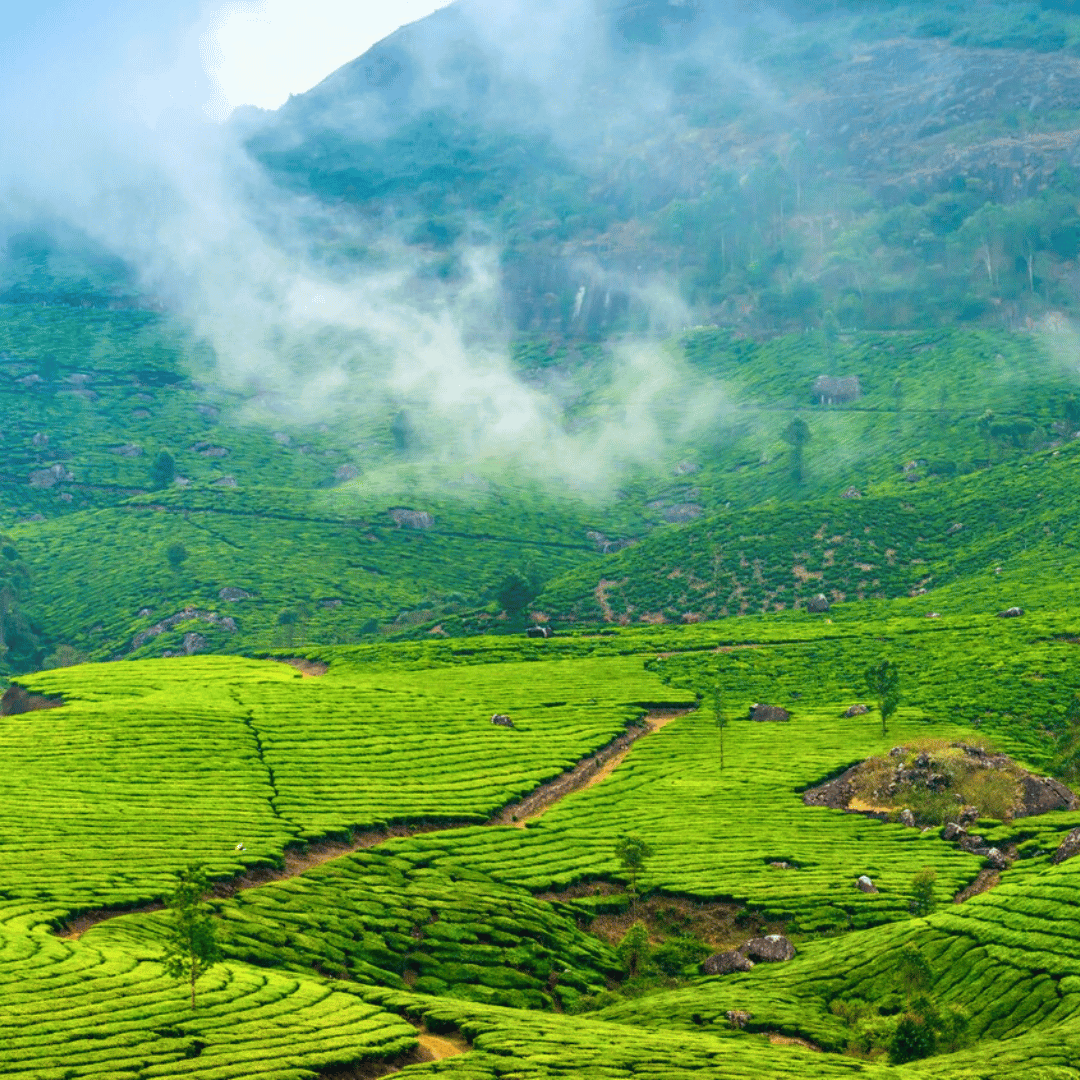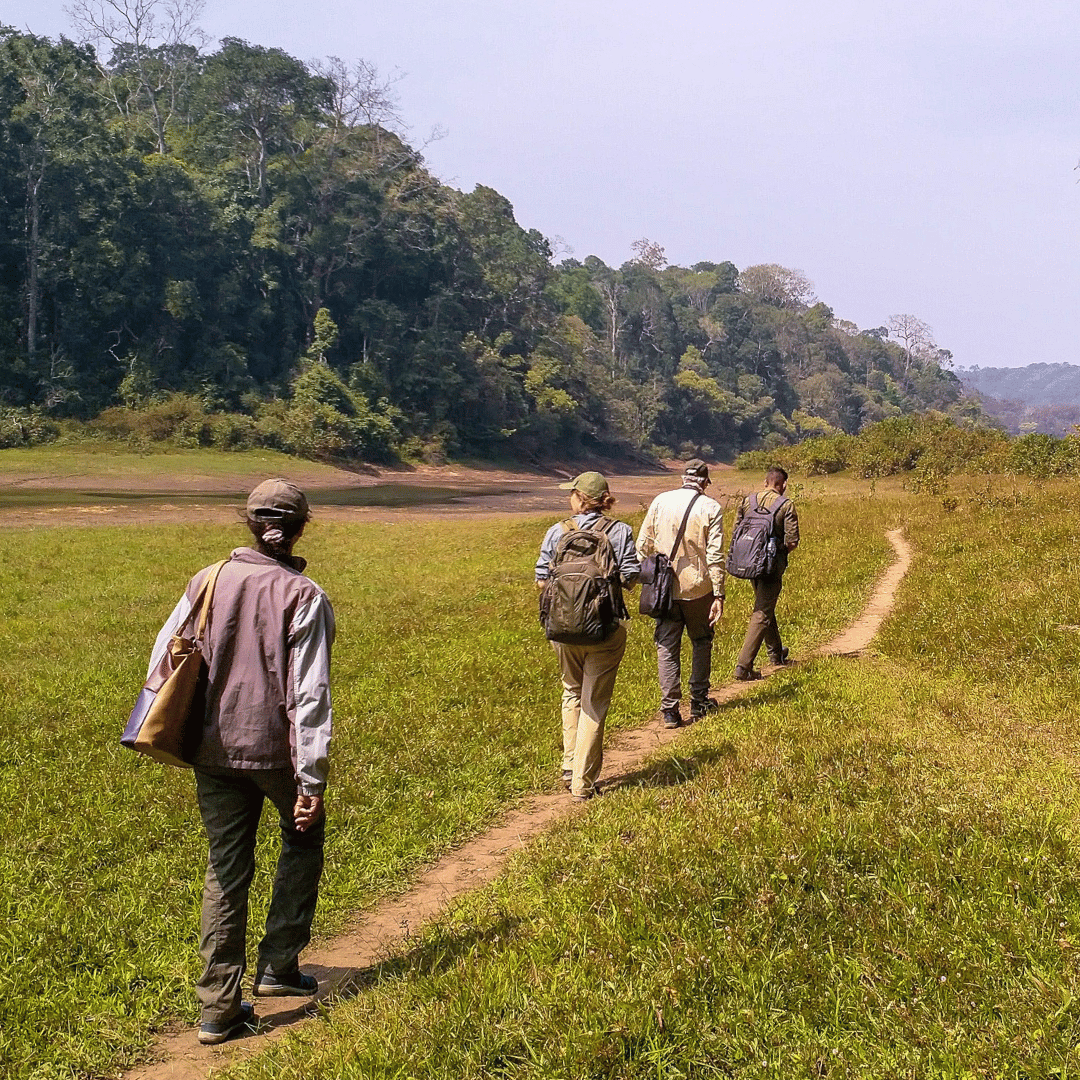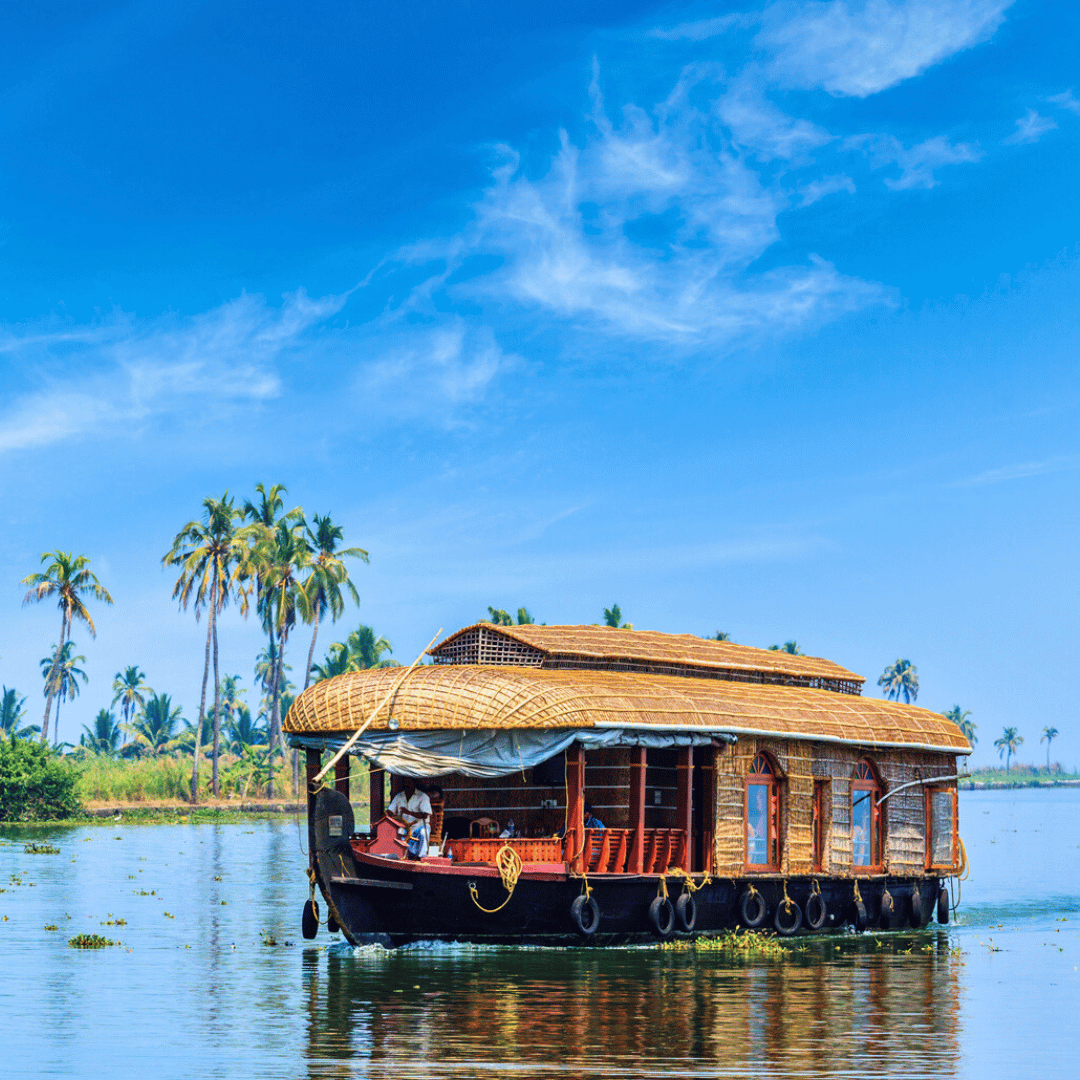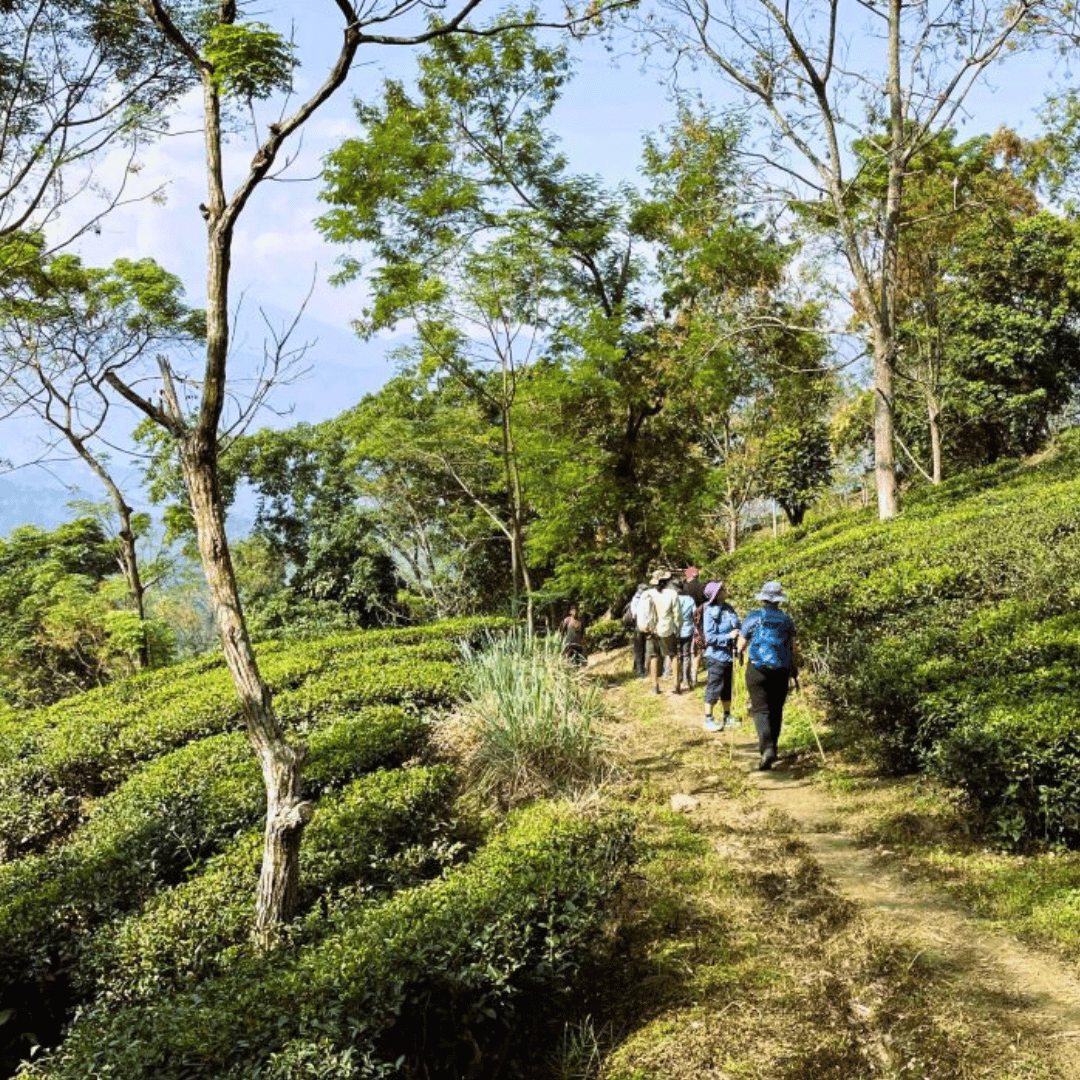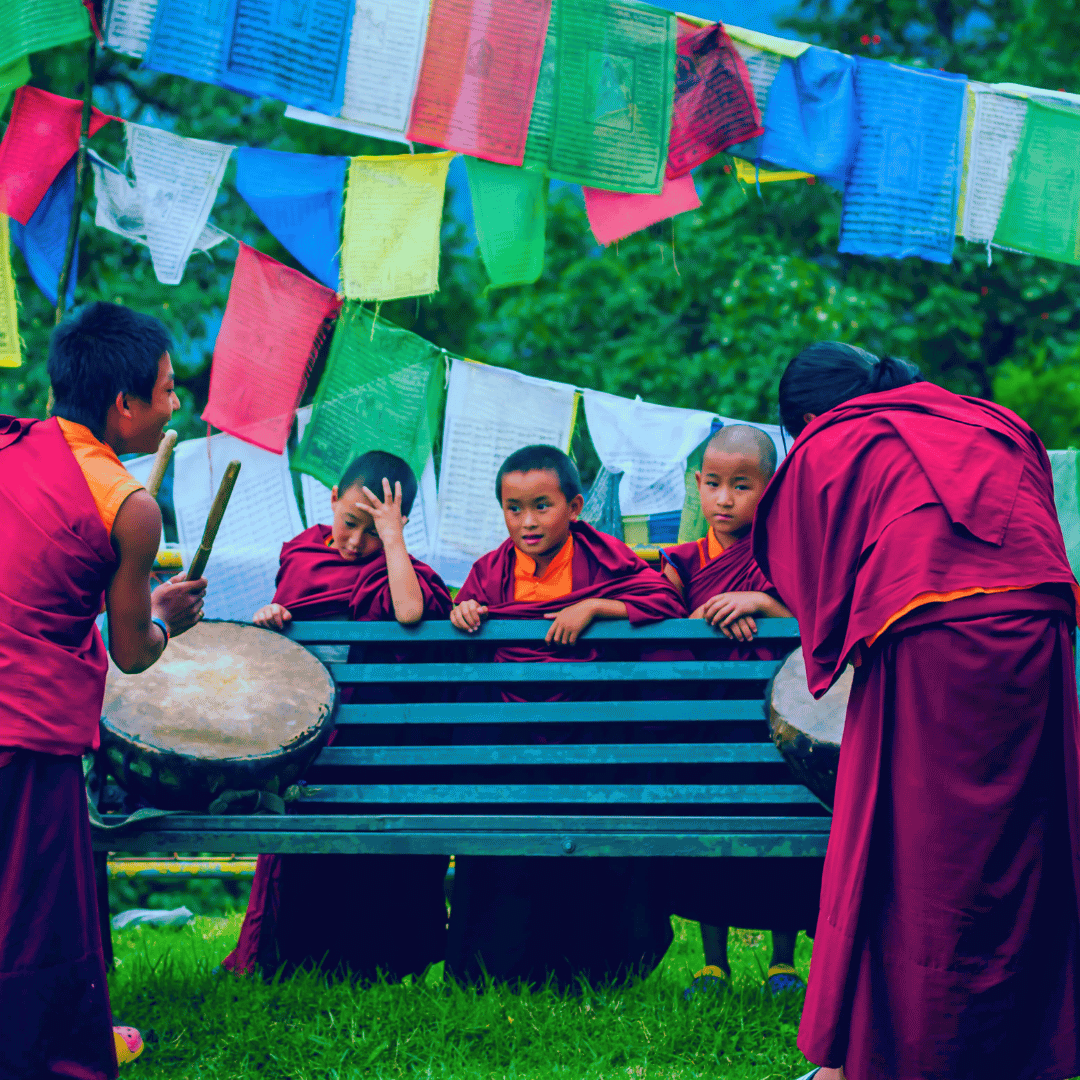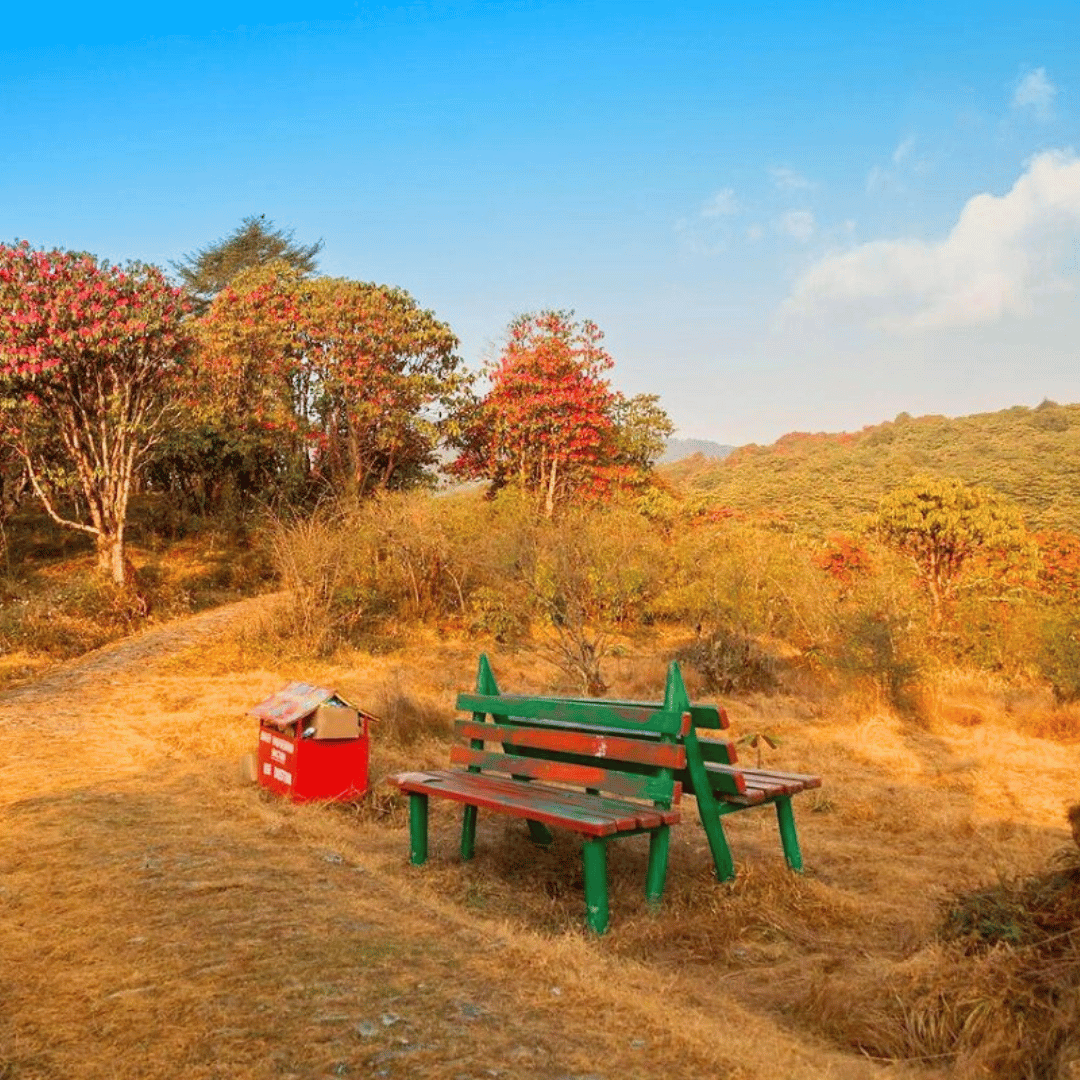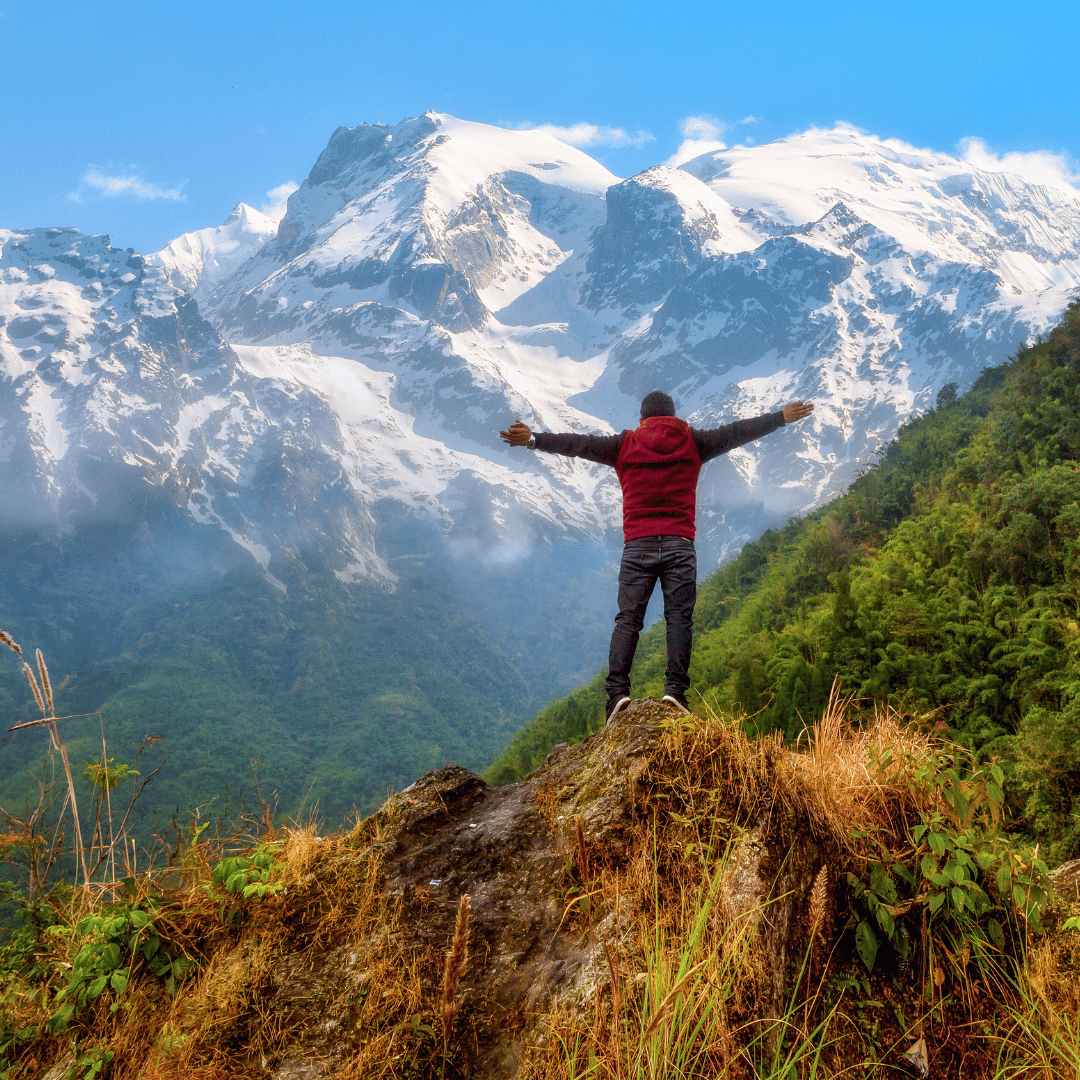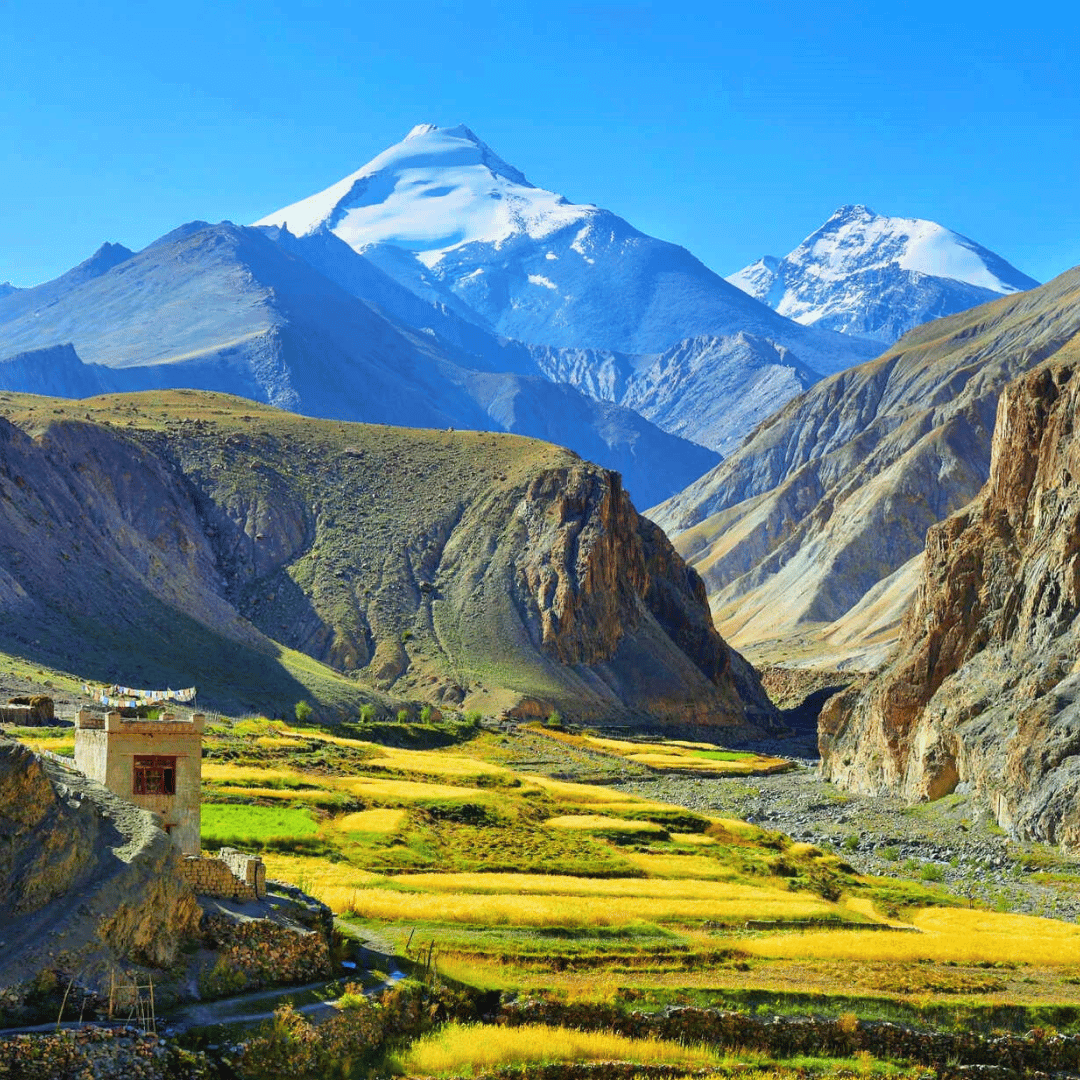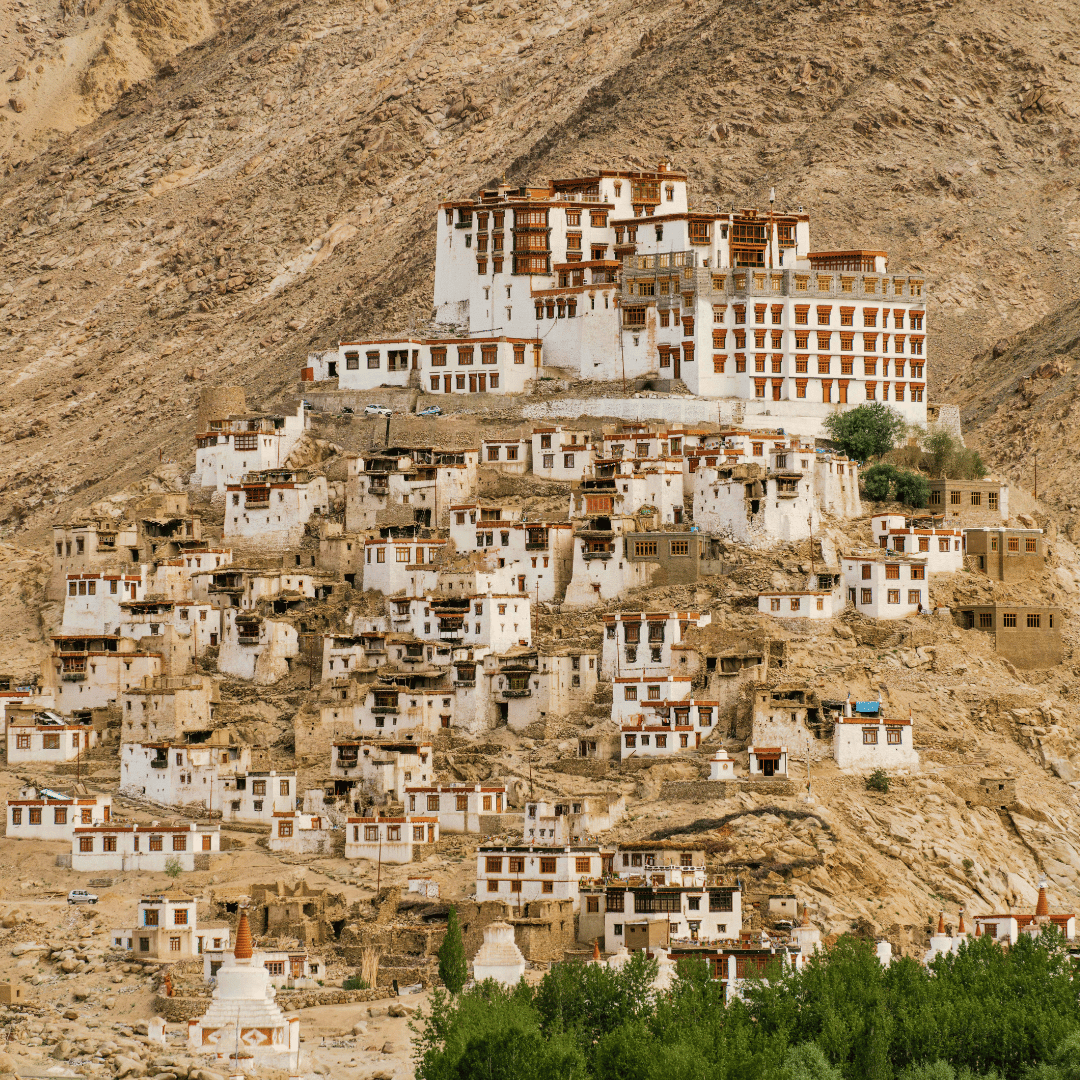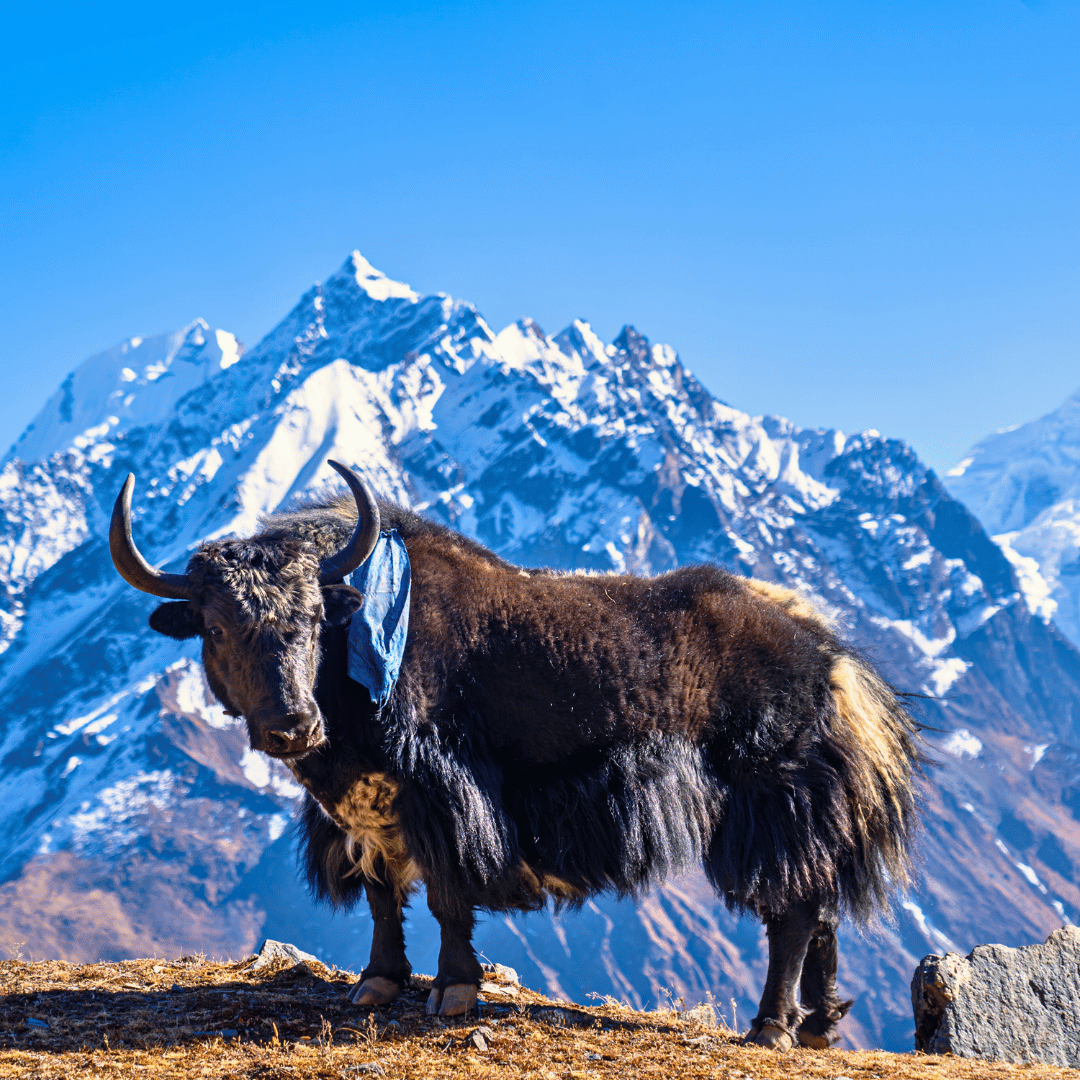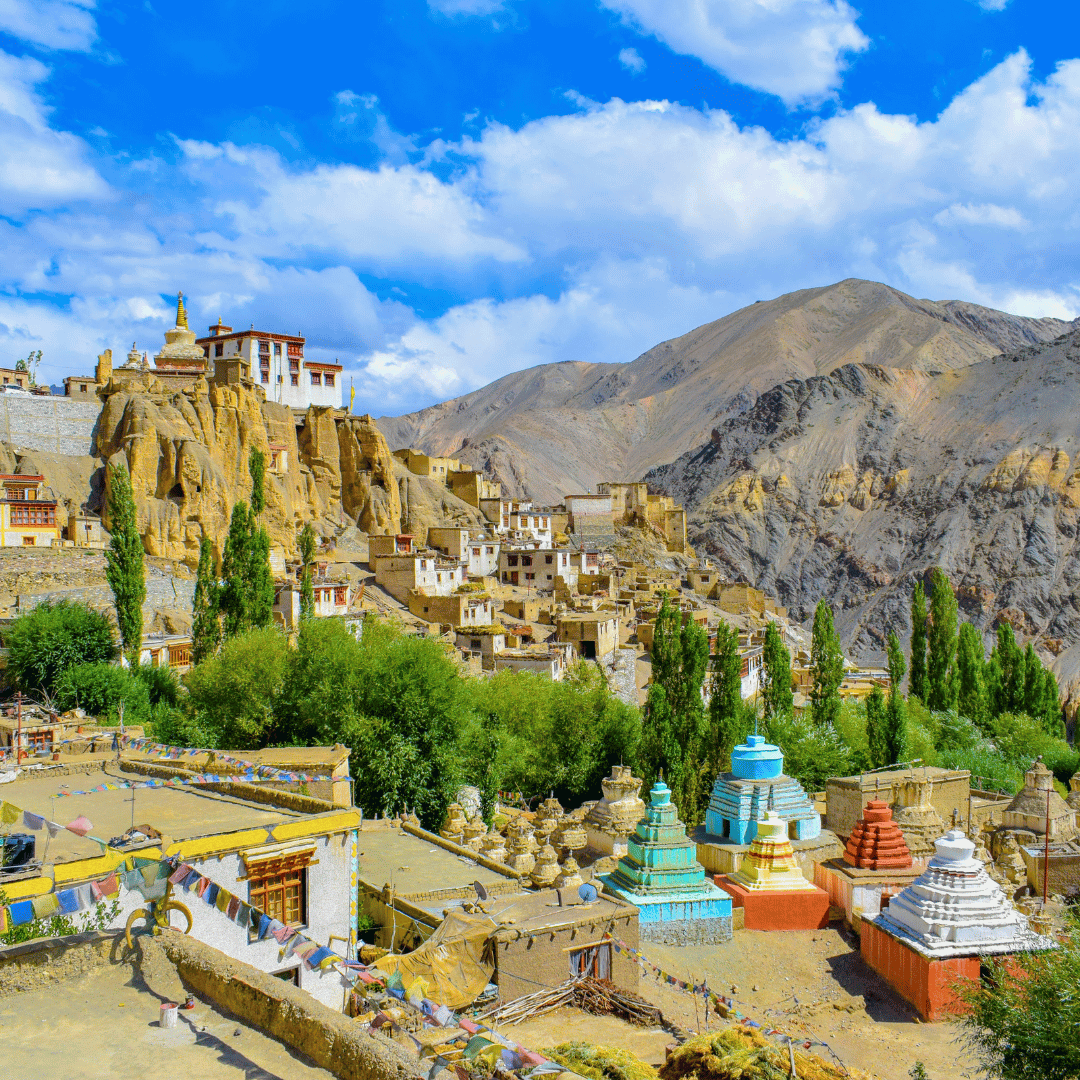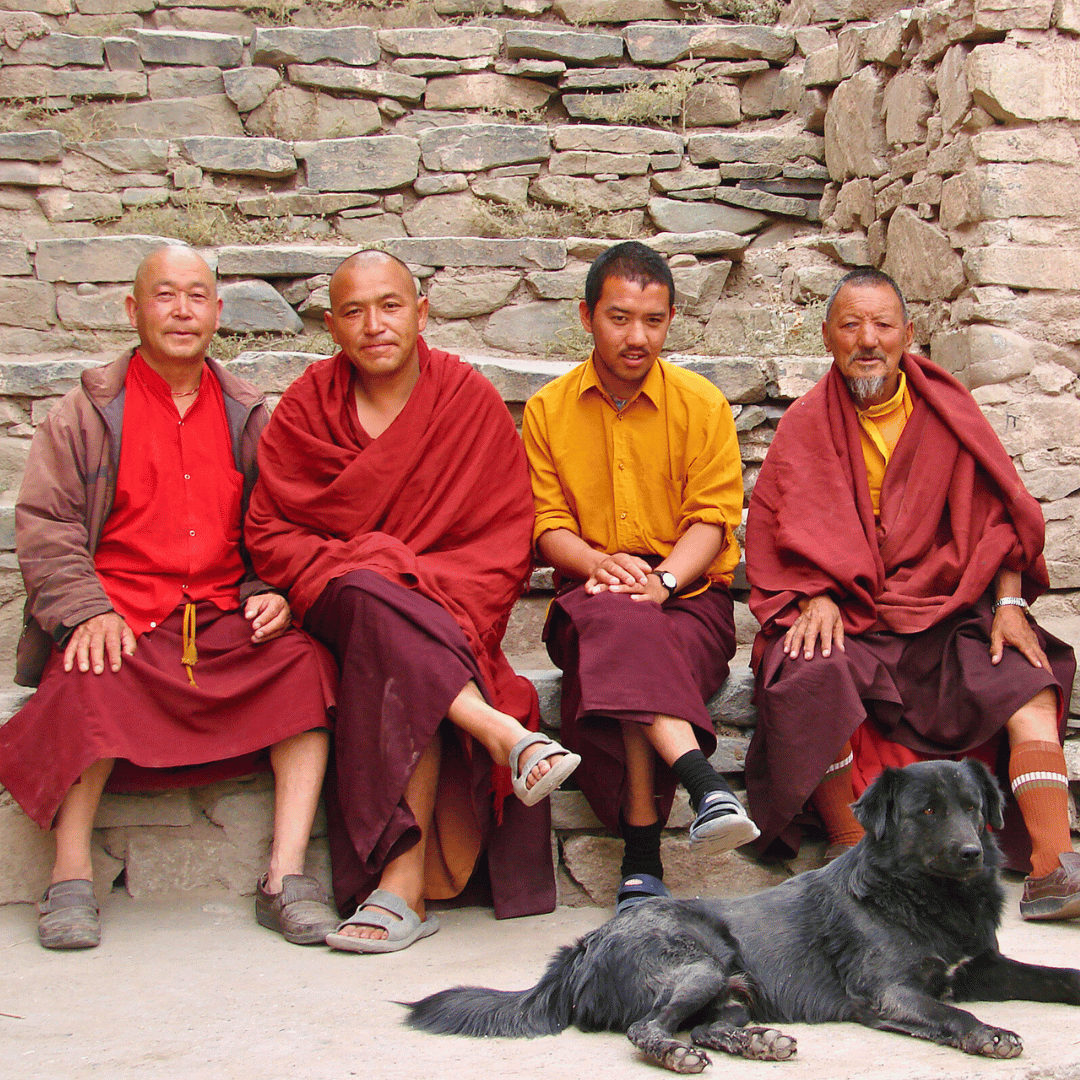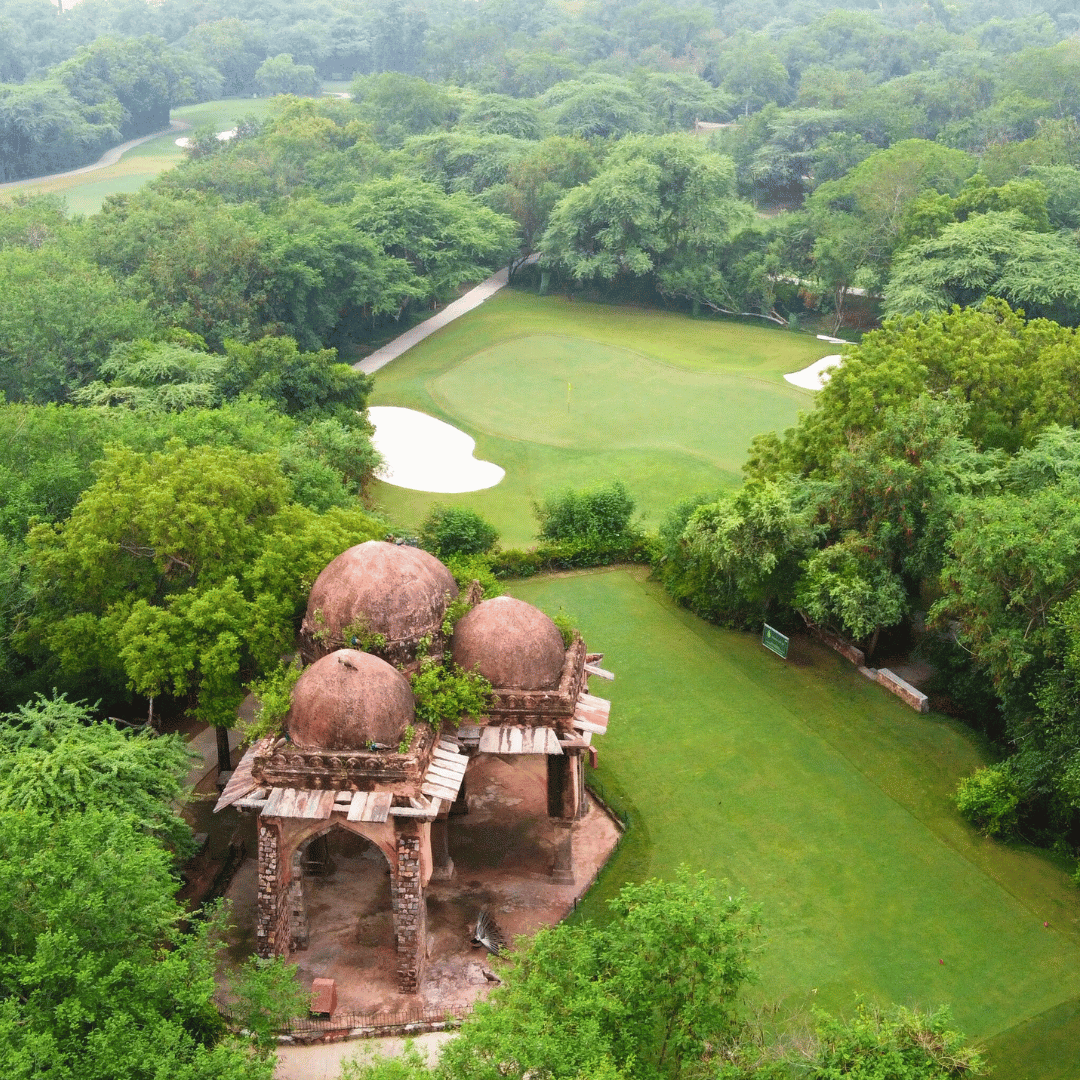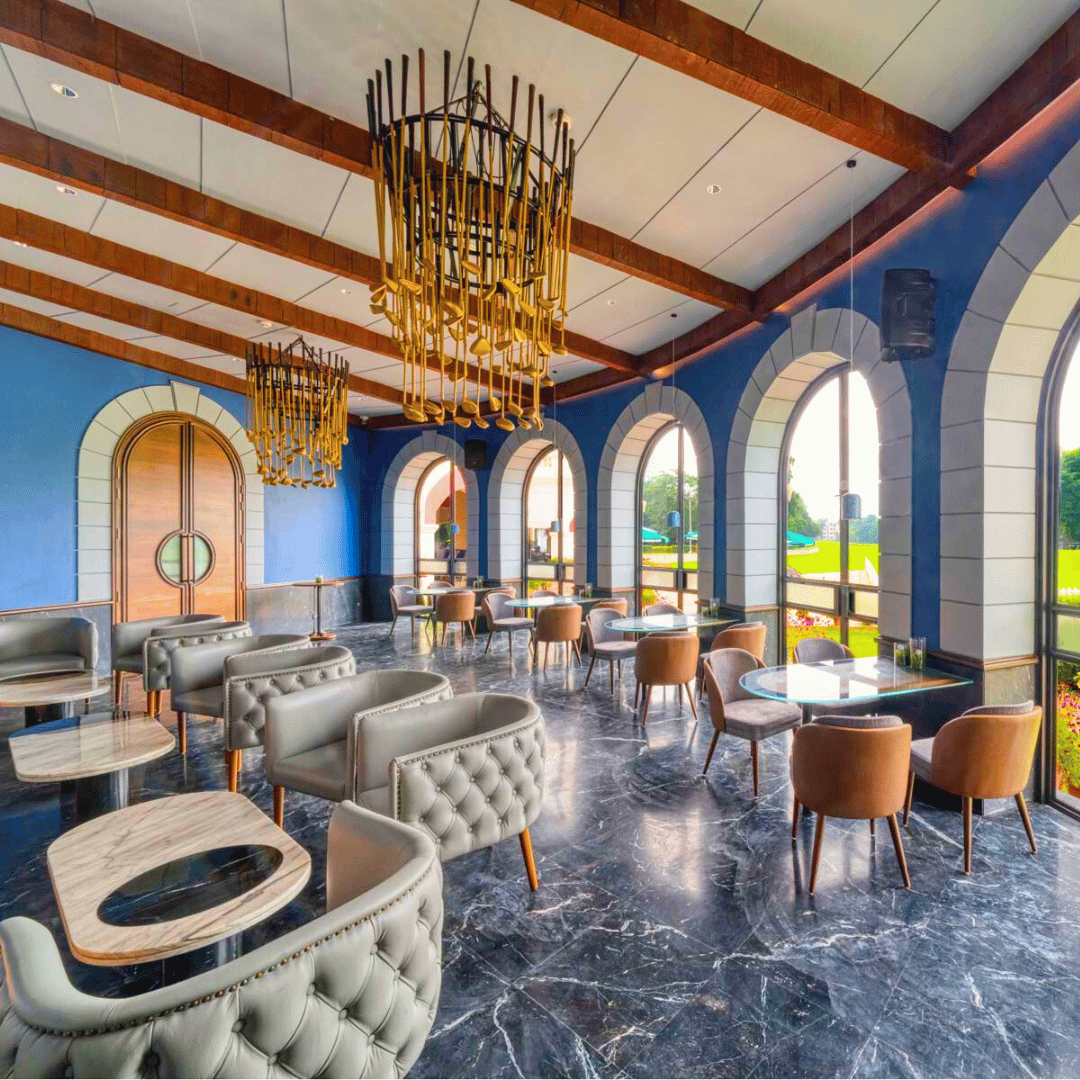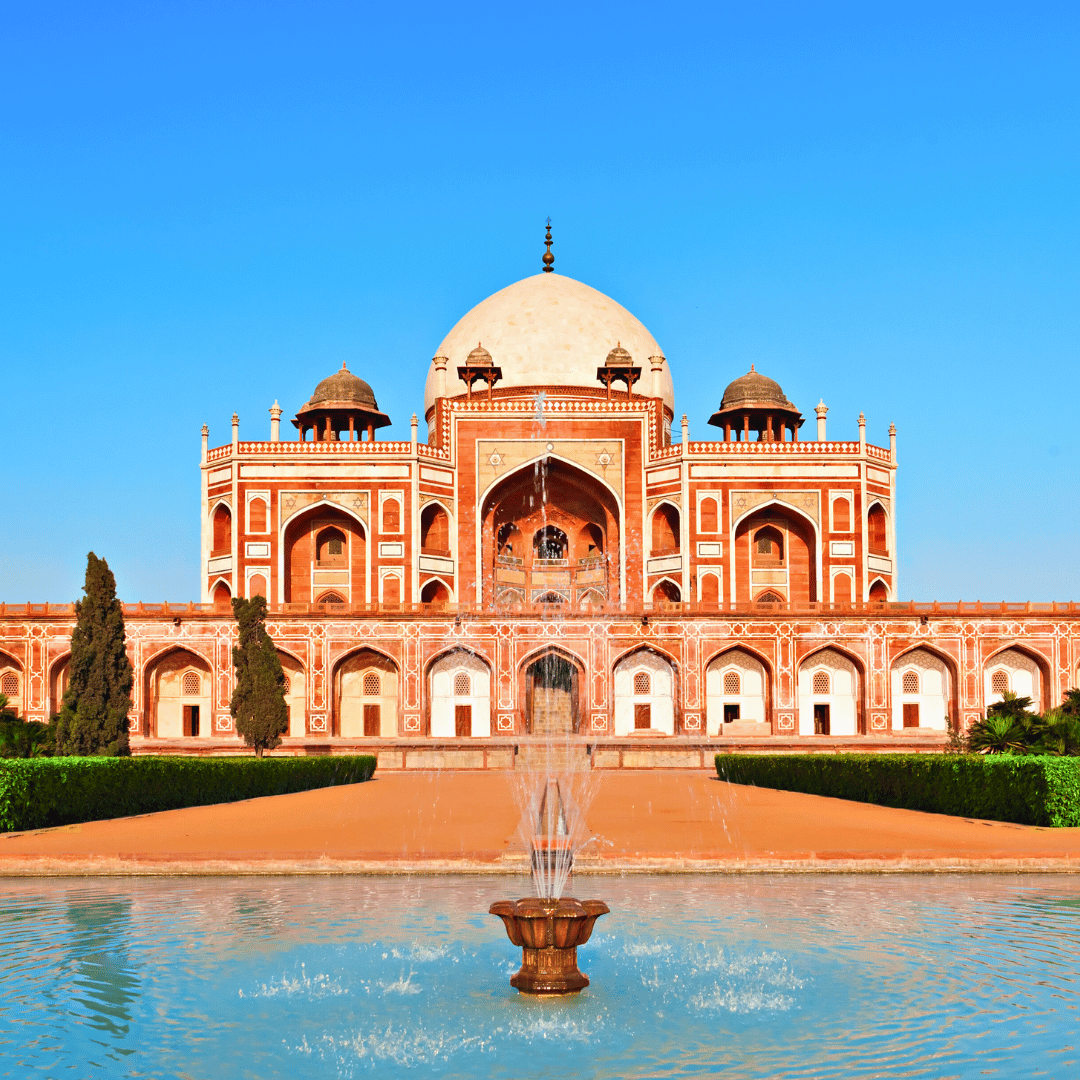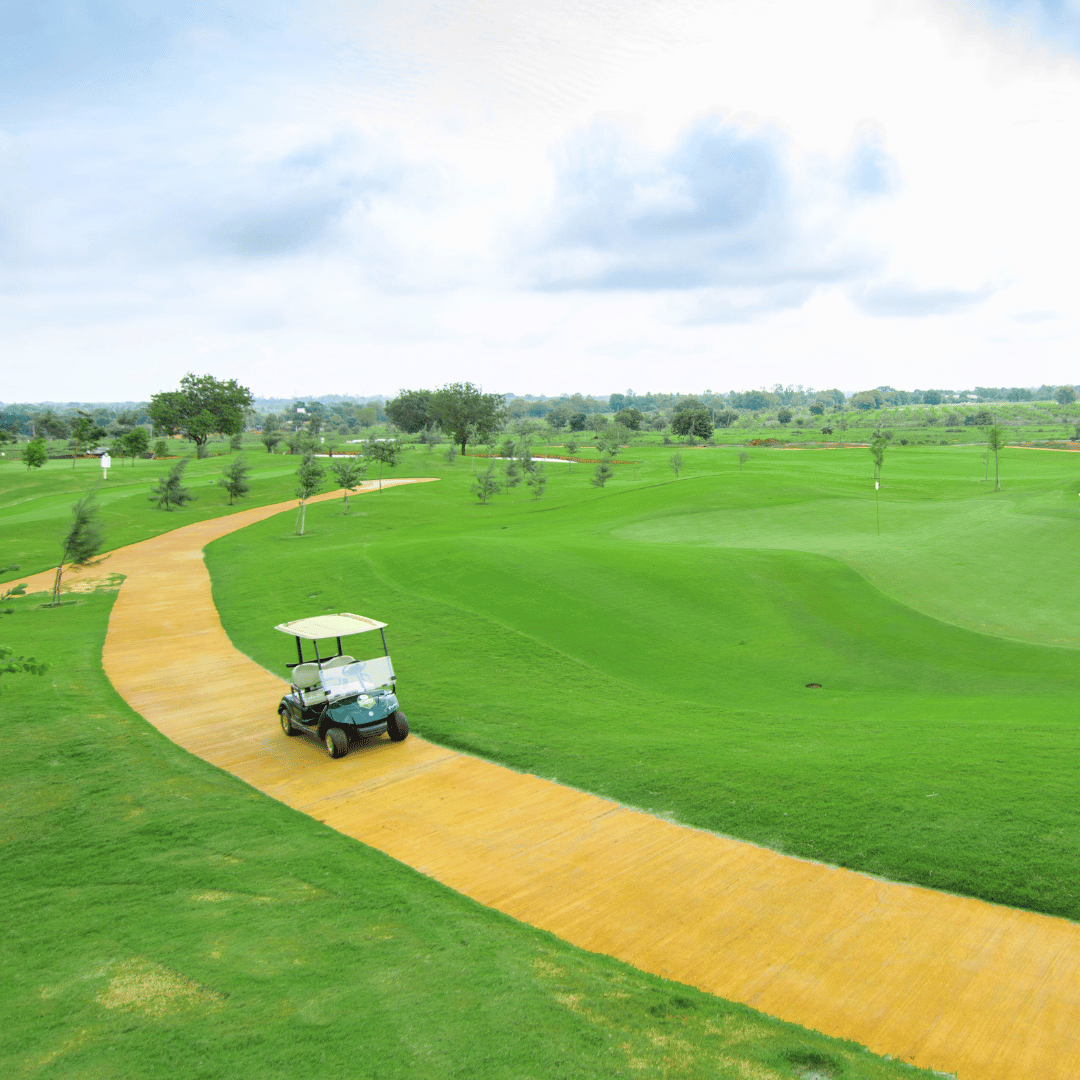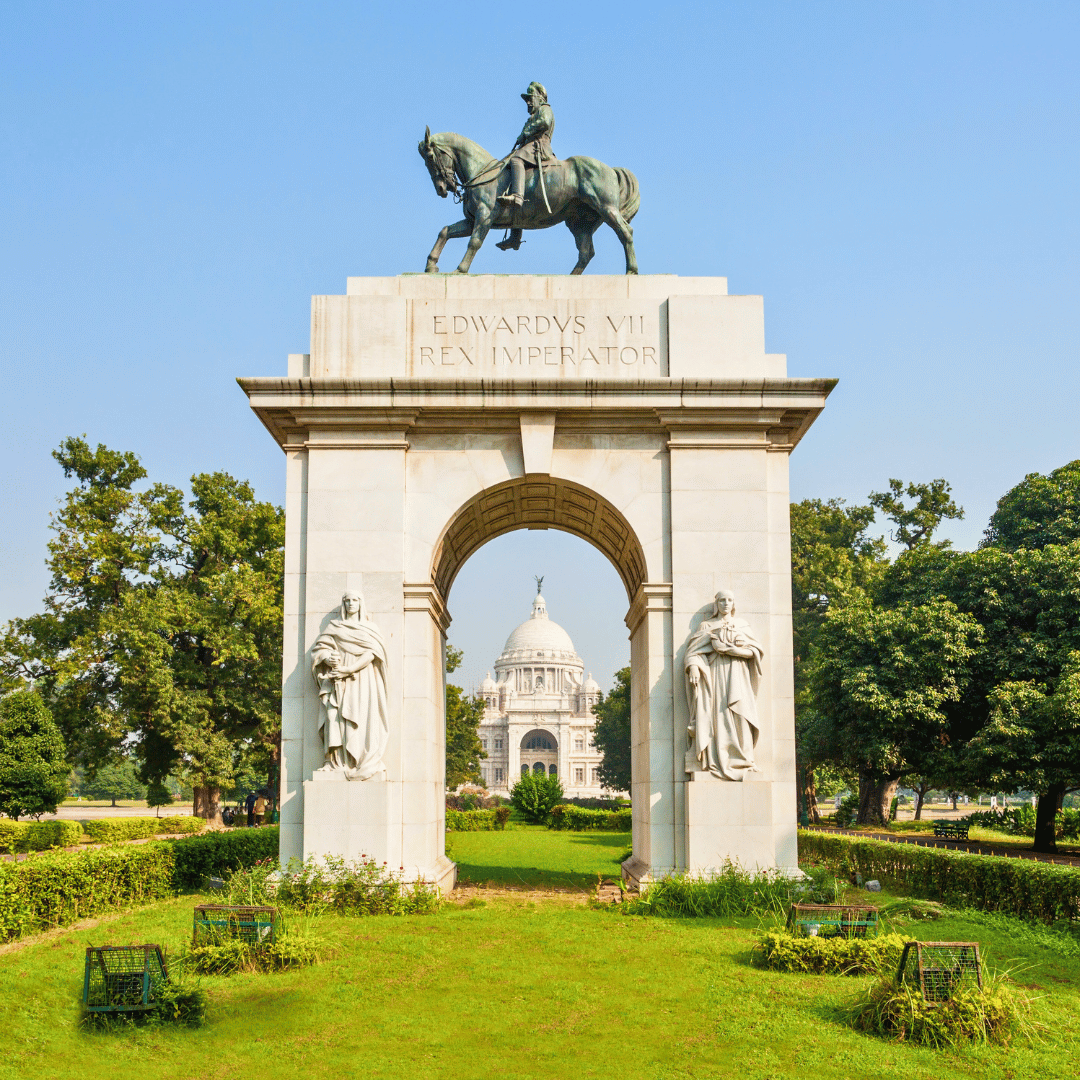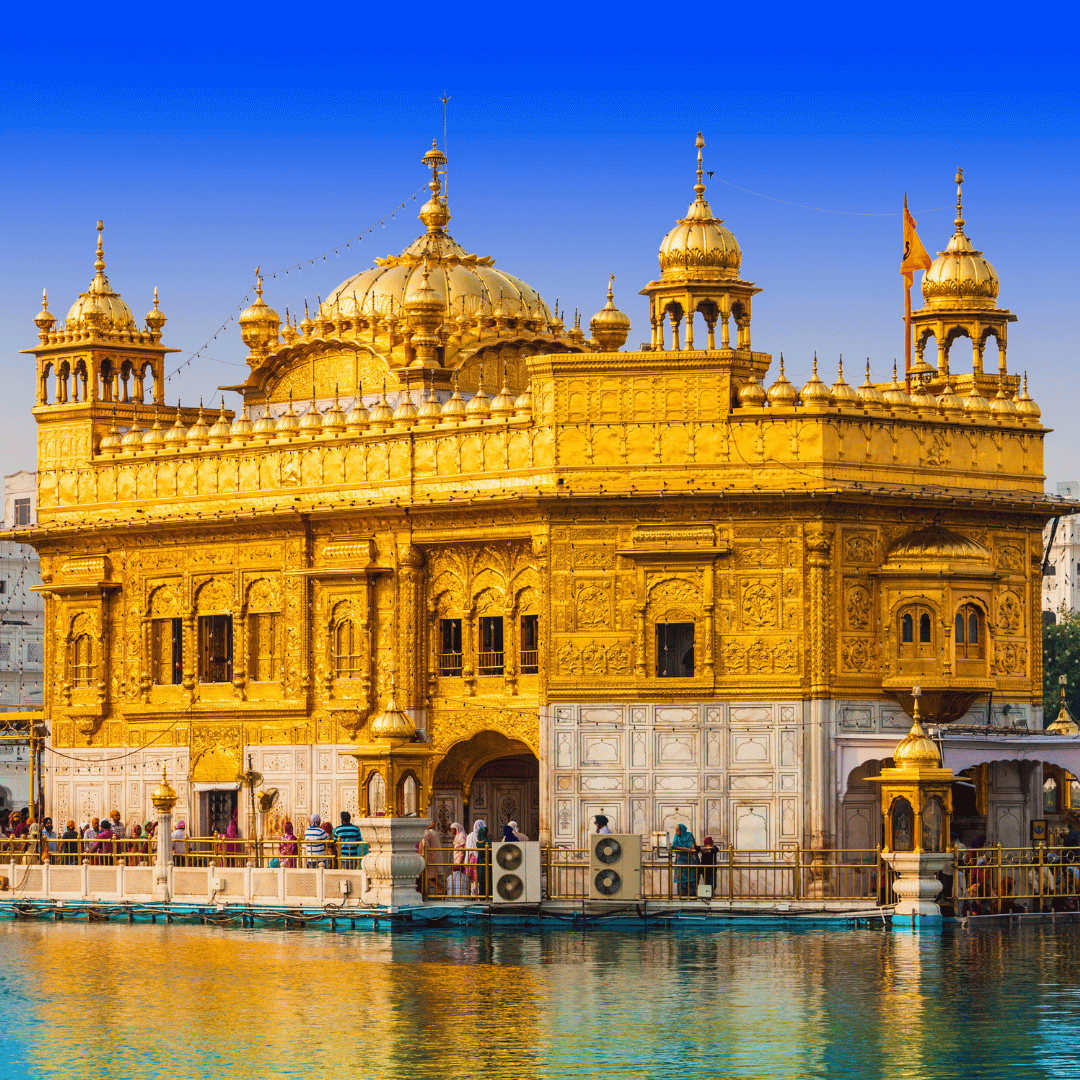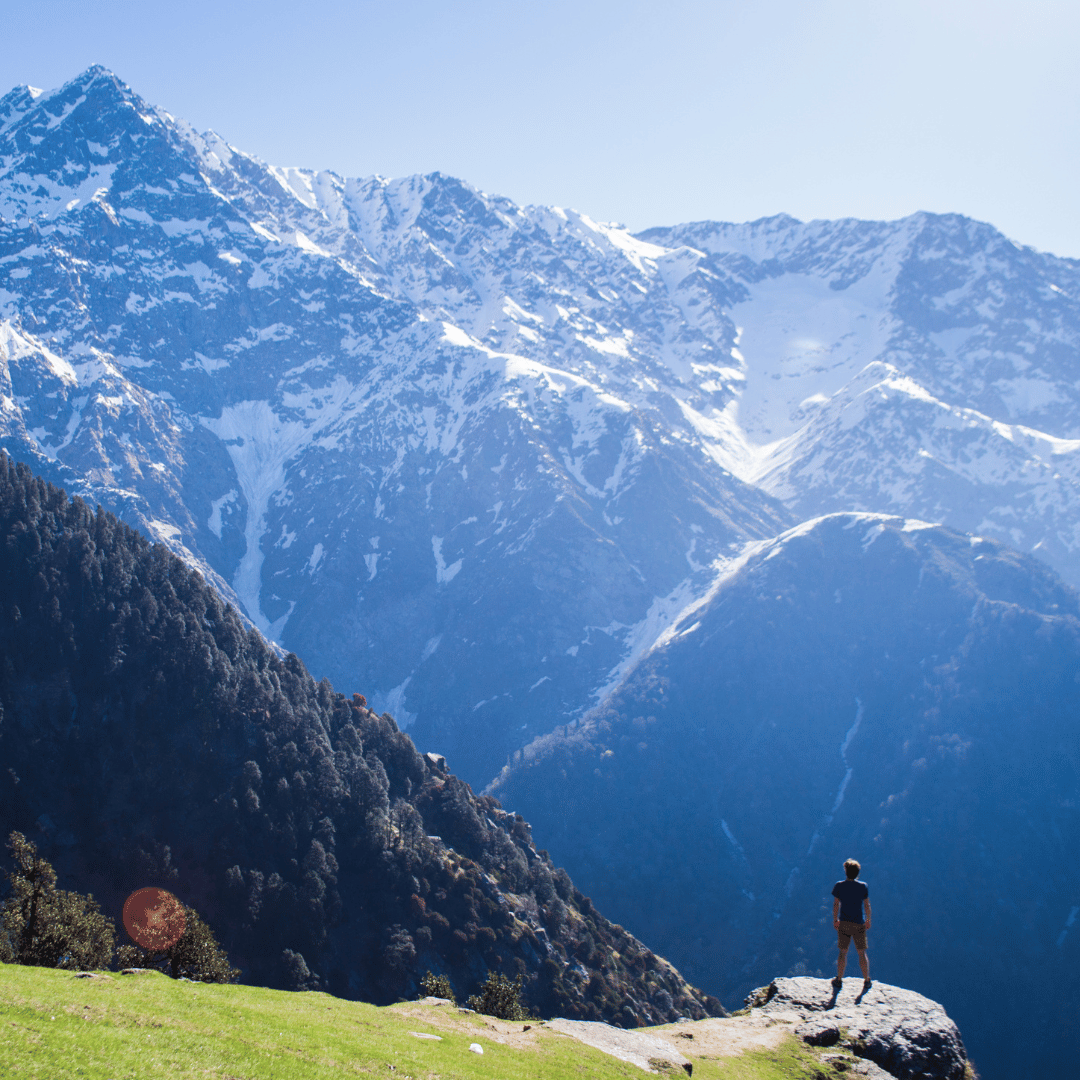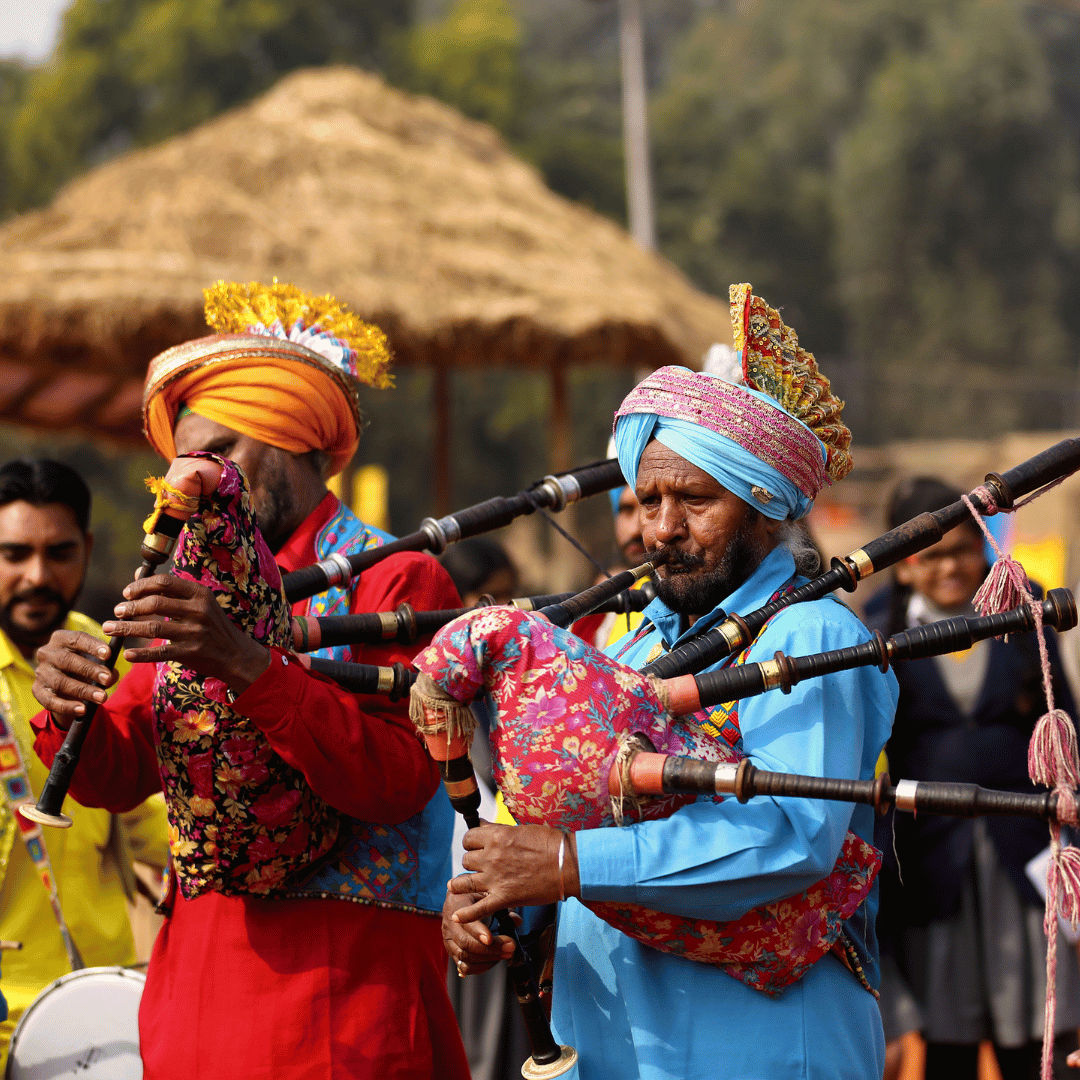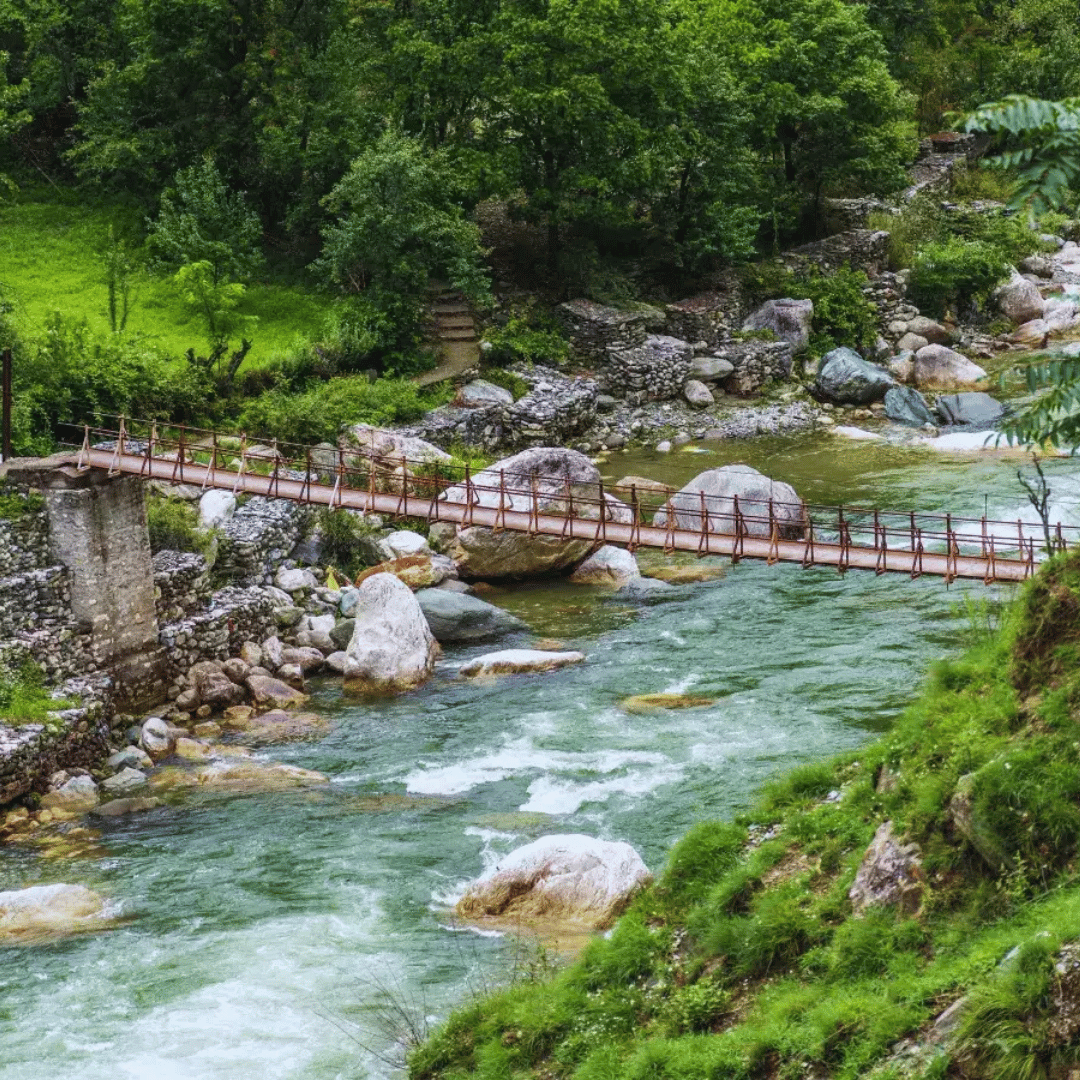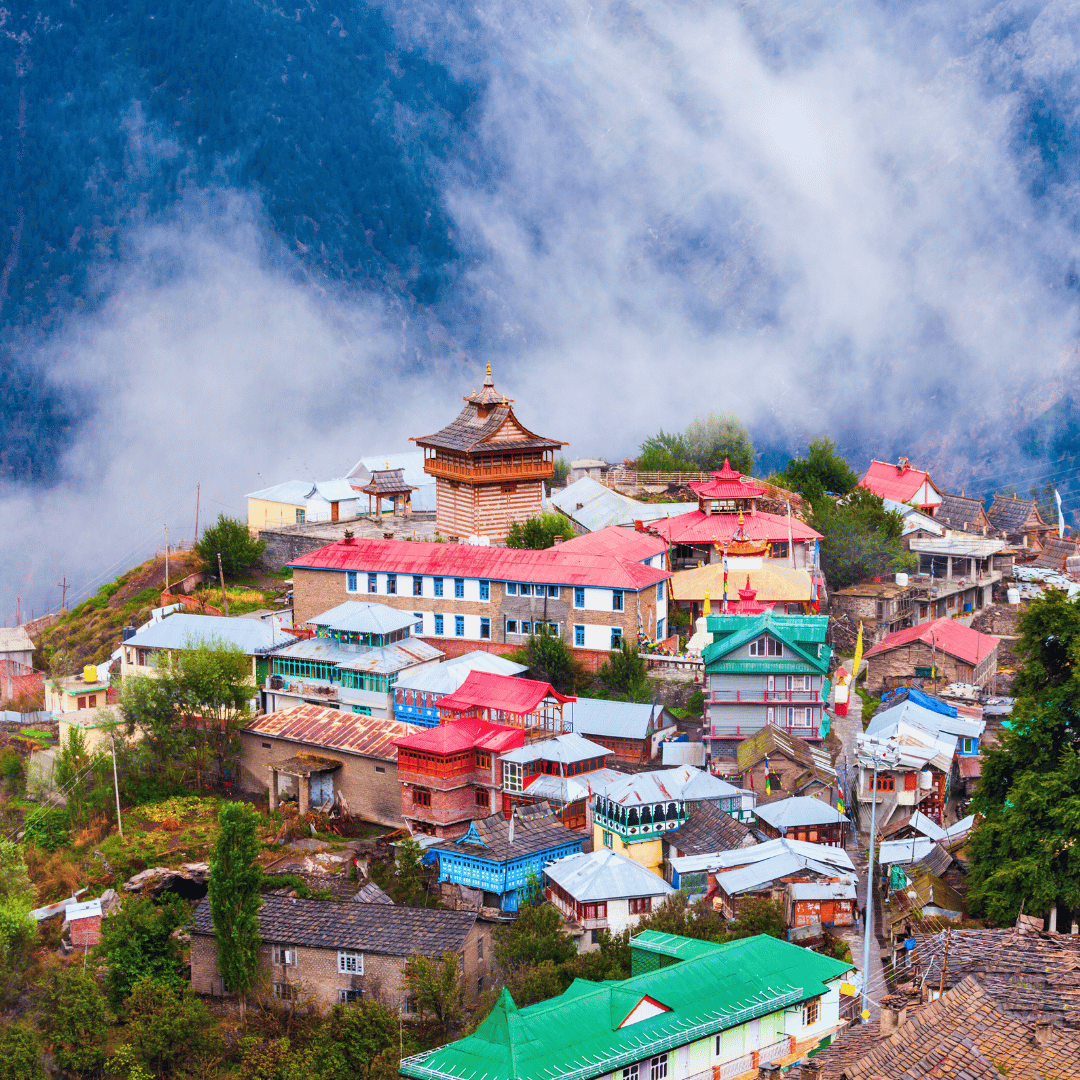Kuari Pass Trek Itinerary
-
Welcome to India! Arrive in Delhi this morning and check in to your hotel, where a day room has been arranged for your comfort. Take some time to rest after your journey, or if you’re feeling energetic, head out to explore a few of the city’s highlights. Depending on your interests and time available, you might visit India Gate, stroll through the gardens of Humayun’s Tomb, or take a rickshaw ride through the bustling lanes of Old Delhi.
Later in the evening, you’ll transfer to the railway station to board the overnight sleeper train to Kathgodam - the gateway to the Kumaon region of Uttarakhand and the starting point of your journey into the Himalayas. Sleeper trains in India are a classic part of the travel experience, offering a comfortable and practical way to cover long distances while waking up in a completely different landscape.
-
The train arrives in Kathgodam at around 6:00am. After disembarking, enjoy a light breakfast before setting off on the scenic drive to Kausani, a peaceful hill station nestled in the Kumaon region of Uttarakhand. The journey takes around five hours, gradually climbing through pine-covered slopes, terraced fields and small mountain villages. You’ll arrive in Kausani by lunchtime and check in to your hotel.
Kausani is known for its expansive Himalayan views and is often referred to as the 'Switzerland of India'. Mahatma Gandhi famously spent time here in 1929, describing it as one of his favourite places in the mountains. On a clear day, you can see a sweeping panorama of some of the region’s most notable peaks, including Nanda Devi, Trisul and the five-pointed peaks of the Panchchuli range.
The afternoon is free to spend at your leisure. You may choose to take a gentle walk in the surrounding hills, visit the local tea gardens or simply relax and begin acclimatising to the higher altitude. Overnight at a hotel in Kausani.
-
This morning, set off on a long but visually rewarding drive to the trailhead at Wan, located at an altitude of around 2,400 metres. The journey takes approximately five hours, winding through a changing landscape of forested hills, river valleys, and remote mountain villages. As the road climbs higher into the Garhwal Himalayas, you’ll notice the air becoming cooler and the scenery increasingly dramatic.
Wan is one of the larger villages in the region and serves as the starting point for the Kuari Pass trek. On arrival, you’ll be met by your support crew, who will have already established camp for the night. The campsite is typically set on the edge of the village, surrounded by terraced fields, pine and oak forest, and distant peaks - offering a peaceful setting to begin your time in the mountains.
Spend the remainder of the day settling in, getting familiar with your surroundings, and preparing for the days of trekking ahead. If time and energy allow, you might take a short acclimatisation walk around the village or simply relax at camp and enjoy the crisp mountain air. Overnight in tents at Wan.
-
Today’s walk takes you deep into the heart of the Garhwal Himalayas, with a rewarding five-hour trek through some of the region’s most scenic and varied terrain. Departing from Wan, the trail initially winds through thick forests of oak and rhododendron - home to a variety of birdlife and, in spring, bursts of vivid pink and red flowers.
You’ll descend briefly to cross the Neel Ganga stream, a cool, clear mountain river often used by locals for drinking water. From here, the trail begins a steady climb, gradually ascending above the treeline. As you gain elevation, the forest thins and the views begin to open out, revealing wide alpine meadows known locally as bugyals.
By midday, you’ll reach Bedni Bugyal, set at an altitude of around 3,400 metres. This is one of the most beautiful high-altitude meadows in the region, especially during the summer months when it’s carpeted with wildflowers. Your campsite here is surrounded by rolling grasslands and offers spectacular close-up views of the snow-covered peaks of Nanda Ghunti and Trisul. On a clear day, you may also catch glimpses of the distant Gangotri range and the towering Chaukhamba massif.
Spend the afternoon resting or exploring the area, taking in the stillness and the sweeping mountain panoramas. Overnight in tents at Bedni Bugyal.
-
Today, set out on a full-day excursion to Kalwa Vinayak, the highest point on the nearby ridge, sitting at an altitude of approximately 4,200 metres. The trek to this sacred site takes around eight hours return and follows a steady ascent from Bedni Bugyal through high alpine terrain, offering increasingly expansive views as you climb. The route passes windswept ridges and open grasslands, where mountain goats and high-altitude birds are often spotted.
At the summit, you'll find a weathered stone statue of Lord Ganesha - the elephant-headed Hindu deity - marking this remote and revered point. It's a place of quiet reflection, surrounded by panoramic views of the surrounding snow-capped peaks, including Trisul and Nanda Ghunti. The location also has an eerie historical significance: skeletal remains of pilgrims and horses, believed to date back 200 to 600 years, can still be seen scattered across the ground, preserved by the cold and altitude. These are thought to belong to a royal pilgrimage group caught in a freak hailstorm, a story that forms part of local legend.
For those with the fitness and desire to venture further - and if snow conditions allow - a challenging return trek to Roopkund can be attempted. This glacial lake, located at around 5,000 metres, is steeped in myth and known for the mysterious human remains resting at its edge. The full return journey to Roopkund and back typically takes 10 to 12 hours and should only be undertaken by well-acclimatised and experienced trekkers.
After a long but memorable day, return to camp at Bedni Bugyal for a well-earned rest.
-
Today you begin your return journey by backtracking towards the village of Wan, following a scenic route that offers a fresh perspective on the landscapes you passed earlier. The day’s walk takes around five to six hours, beginning with a gradual climb through dense forests of oak, rhododendron and pine as you make your way towards Kankuni Khal Pass.
Surrounded by thick woodland and the sounds of the forest, the pass marks a quiet, shaded point along the trail - ideal for a short rest before continuing. From here, the trail descends steadily through more forest and terraced farmland towards your campsite, set just above the village of Kanol at around 2,300 metres. The walk is pleasant and not too strenuous, making for a relaxed day on the trail.
For those feeling energetic - and if the weather is clear - there’s an option to extend the day with a detour to a ridge that rises to approximately 3,900 metres. The climb is a longer and more demanding route, turning today’s walk into an eight-hour journey, but the reward is well worth the effort. From the top, you’ll be treated to expansive views of the Garhwal Himalayas, including Trisul, Nanda Ghunti and other distant snow-capped peaks.
Whether you opt for the standard trail or the longer ridge route, you’ll finish the day at a peaceful campsite above Kanol, surrounded by forest and open skies. Overnight in tents.
-
Today is a more relaxed stage of the journey, with a gentle walk of around four to five hours. Departing from your campsite above Kanol, you’ll begin by passing through the village itself, where traditional stone and slate-roofed houses line the narrow paths. Life here continues much as it has for generations, with locals tending to their livestock and crops in the surrounding fields.
The trail winds past terraced farmland where wheat and amaranthus are grown. These plants turn a striking red in the autumn months, adding a vibrant touch to the landscape. Continuing on, the path enters thick forest, where oak and rhododendron trees form a dense canopy overhead. In spring, the rhododendrons bloom in brilliant shades of red and pink, while wild orchids and other native plants can often be seen nestled among the undergrowth.
As you descend further, the forest gradually gives way to open spaces and the sound of running water grows louder. The trail eventually leads down to a river, which you follow towards the outskirts of Sitail, a quiet village tucked into the lower hills at around 1,750 metres.
Tonight’s camp is set beside the riverbank, offering a peaceful and scenic location to unwind. After settling in, you can relax by the water, listen to the sounds of the forest, or take a short walk in the surrounding area before dinner. Overnight in tents by the river.
-
Today involves a longer day on foot, with around 6.5 hours of trekking ahead. The route follows a well-formed and relatively wide path, making for steady progress, though there are some steeper sections that require a bit of effort as you gradually gain altitude.
The trail winds through a series of small mountain villages, where you’ll pass local homes, terraced farmland, and the occasional cluster of schoolchildren or farmers going about their daily routines. These quiet rural settlements offer a fascinating glimpse into life in the Himalayan foothills, where traditions remain closely tied to the land and the seasons.
As you continue climbing, the landscape opens up to reveal expansive views across the surrounding hills and valleys. You’ll notice the change in vegetation as you gain height, with pine and oak forest giving way to open clearings and scattered wildflowers.
By mid to late afternoon, you’ll reach Ghunni, a relatively large village for the region, located at around 2,350 metres. The village is lively with activity and has a warm, welcoming feel. Your camp for the night is set near the local school, at a scenic and peaceful spot that overlooks the valley below. It’s an ideal place to rest after a rewarding day’s walk, with time to relax or perhaps chat with some of the villagers before dinner. Overnight in tents near Ghunni.
-
Today’s trek begins with a challenging but rewarding ascent, covering around 6 to 7 hours on foot. You’ll start with a steep climb along a rocky path that leads out of Ghunni, quickly gaining elevation as you head towards the high meadows above the village. The early effort is soon rewarded with sweeping views of the valley below and the surrounding peaks, and in spring and summer, the meadows are often dotted with wildflowers.
Once you reach the open pastures, the trail levels out somewhat, allowing for a more gradual climb towards the top of Ramni Pass, which sits at an altitude of approximately 3,080 metres. The pass itself is a peaceful, windswept spot, and on a clear day, it offers impressive views of the distant peaks and ridgelines stretching out across the Garhwal Himalayas.
From the pass, the trail begins a steep descent, plunging back into thick forest. The path winds through tall oak and rhododendron trees, with the occasional clearing where you can pause to take in the view or spot birdlife flitting through the canopy. As you continue, you’ll pass through the hamlet of Semkhar, a quiet place with a handful of traditional homes and terraced fields.
The final stretch brings you to the small village of Jhenjipani, located at around 2,075 metres, where you’ll camp for the night. The village is nestled on a gentle slope with views over the valley, and your campsite is typically set just outside the settlement, offering a peaceful place to rest after the day’s varied and rewarding trek. Overnight in tents at Jhenjipani.
-
This morning’s trek covers approximately 4 to 5 hours and takes you through a mix of terrain as you move from one picturesque valley to another. Departing from your campsite at Jhenjipani, the trail begins with a steady descent through forest and terraced farmland, heading down towards the Brithi Ganga River. The air here is cooler and the path winds through shaded gullies as you make your way to the valley floor.
At the base, you’ll cross the river via a suspension bridge - a striking feature in the landscape and often a highlight for walkers. After crossing the bridge, the trail immediately climbs steeply out of the narrow valley. The ascent follows a series of tight zig-zags, gaining height quickly as you rise above the river. Though the climb is demanding, regular breaks offer rewarding views back across the valley and a sense of the dramatic terrain you've just crossed.
Eventually, the path levels out at around 2,300 metres and begins to contour gently around the hillside. From here, the walking becomes more relaxed as the trail winds through a quieter stretch of forest and farmland. In the distance, you’ll begin to see the cluster of slate-roofed houses that mark the village of Pana.
Your campsite for the night is set above the village, at roughly 2,700 metres, surrounded by terraced fields of corn, maize and mustard. The views from camp are wide and open, with glimpses of forested ridges and high peaks beyond. This peaceful location offers a chance to rest, take in the mountain air, and watch daily life unfold in the fields below. Overnight in tents above Pana.
-
Today’s walk takes you deeper into the high country, with a 4 to 5 hour trek through a stunning mix of forest, ridgelines and open alpine meadows. Departing from camp above Pana, the trail begins with a gradual ascent along a forested ridge. For around an hour and a half, you’ll follow a well-formed path beneath a canopy of oak and rhododendron, with filtered views through the trees and the sounds of birds echoing in the still morning air.
Eventually, the forest begins to thin as the trail descends into another valley, offering a first distant glimpse of the Kuari Pass, framed by the high ridgelines in the distance. This view marks a turning point in the trek - it’s the first indication that you’re nearing the upper reaches of the route.
The path soon opens out into the broad alpine meadow of Siyartoli, a vast, windswept grazing ground used by local shepherds during the warmer months. This is a scenic and peaceful place to pause and take in the surrounding mountains and open skies. From the meadow, the trail drops briefly to cross a mountain stream - often flowing briskly with meltwater - before beginning a steep ascent on a zig-zagging path that climbs just above the treeline.
This final stretch is challenging but rewarding, offering increasingly dramatic views as you gain height. The track is well built and offers good footing, even as it climbs steadily up the hillside. By the time you reach camp, you’ll be well above the tree line, surrounded by alpine scenery and crisp mountain air - an excellent spot to prepare for the final approach to the Kuari Pass. Overnight in tents.
-
Today’s trek is one of the most memorable of the journey, covering roughly six hours and taking you to the high point of the entire route - the mighty Kuari Pass. The day begins with a steady and often steep climb up a well-worn mountain path. As you ascend, the landscape opens out into high alpine terrain, and the trees give way to rocky slopes and expansive views.
After a solid effort, you’ll reach a col - a high saddle point in the ridge - where you’re rewarded with sweeping panoramic views. To the east lies the magnificent Nanda Devi Sanctuary, an amphitheatre of towering peaks surrounding India’s second-highest mountain. Looking west, the snow-covered summits of Kedarnath and Badrinath stand tall, two of the most sacred peaks in the Indian Himalayas. It’s a dramatic and humbling vantage point, with views that shift as clouds pass and the light changes throughout the day.
From here, continue to Kuari Pass, sitting at an elevation of approximately 3,650 metres. The famed mountaineer Eric Shipton once described the view from Kuari as “one of the grandest mountain views in the world,” and it’s easy to see why. The pass offers a stunning 360-degree panorama of some of the most iconic peaks in the Garhwal Himalayas, including Kamet, Dronagiri, Hathi Parbat and of course, the unmistakable profile of Nanda Devi.
After taking time to absorb the views and capture some photos, begin your descent to the meadows of Chitra Kantha, located at around 3,200 metres. The trail winds gently downwards through rolling alpine grasslands, and as you descend, the towering peaks gradually fade behind you. Tonight’s camp is set in a scenic meadow with wide skies and clear air, a perfect place to reflect on the day’s achievements. Overnight in tents at Chitra Kantha.
-
Today marks the final stage of your trek, with a 5 to 6 hour walk that brings you down from the high meadows to the scenic slopes of Auli. The day begins with a descent along a fairly narrow trail that hugs the hillside, offering continuous and uninterrupted views of Nanda Devi, its snow-capped summit standing tall above the surrounding ridges. As the morning light shifts, the peak often appears to glow - an unforgettable sight as you make your way down.
The path soon widens, leading into expansive alpine meadows that, during the warmer months, are carpeted with wildflowers. This open landscape is part of the Gorsain region, known for its rolling pastures and wide horizons. It’s a peaceful and picturesque section of the walk, with views extending deep into the Garhwal range and, at times, local shepherds grazing flocks on the slopes.
Continuing on, the trail re-enters forest, where oak and conifer trees line the path and the scent of pine drifts on the breeze. As you descend further, signs of civilisation begin to reappear, and the path eventually brings you to the alpine resort town of Auli.
Set at an altitude of around 2,500 metres, Auli is best known as one of India’s premier ski destinations, but outside of the winter months, it offers stunning views and a serene mountain atmosphere. The grassy slopes and wide vistas make it a fitting and beautiful place to conclude your trek.
With the hard walking now behind you, there’s time to relax and reflect on the journey - days spent walking through forests and meadows, across high passes, and through villages where life remains closely tied to the rhythm of the mountains. Overnight in Auli.
-
This morning, begin the long but scenic drive to Rishikesh, a journey of around 8 to 9 hours that winds its way down from the high country through the Himalayan foothills. The road follows the course of the Alaknanda River for much of the way and passes through a number of important pilgrimage towns, each with its own spiritual significance.
You’ll travel through Nandprayag, Karanprayag, Rudraprayag and Devprayag - four of the five sacred ‘prayags’ (river confluences) where tributaries of the Ganges meet. These towns are deeply significant in Hindu tradition and often filled with pilgrims, shrines and colourful roadside temples. Along the way, you’ll see terraced fields clinging to the hillsides, riverside villages and distant mountain peaks fading into the haze as you descend.
Arriving in Rishikesh by late afternoon or early evening, you’ll check in to your accommodation and have time to freshen up before heading to the riverbank for one of the town’s most iconic experiences. At dusk, join locals and visitors alike to witness the evening aarti ceremony along the ghats of the Ganges. As priests chant hymns and perform rituals, small oil lamps (diyas) are set afloat on the river, their flickering lights reflecting in the water as the sun sets behind the hills.
The atmosphere is both peaceful and vibrant, a fitting introduction to Rishikesh - known as the ‘Yoga Capital of the World’ and a long-time spiritual centre on the banks of one of India’s most sacred rivers. Overnight in Rishikesh.
-
Set on the banks of the sacred Ganges River, Rishikesh is both a revered pilgrimage site and a globally recognised centre for yoga, meditation and spiritual learning. Framed by forested hills and suspension bridges spanning the river, the town blends ancient tradition with a laid-back, welcoming atmosphere.
Spend the morning exploring Rishikesh at your own pace. You might visit one of the many ashrams offering insight into Hindu philosophy and daily spiritual practice, or take a walk along the river to see sadhus (holy men), pilgrims and travellers gathered on the ghats. Landmarks such as the Beatles Ashram, Triveni Ghat and the bustling lanes near Laxman Jhula offer a good mix of cultural, spiritual and everyday scenes. You may also take a final stroll along the riverfront or enjoy a quiet chai in one of the many cafés overlooking the water.
By late morning or midday, begin the drive back to Delhi, a journey of approximately 6.5 to 7 hours. As you leave the Himalayan foothills behind, the landscape gradually flattens out, giving way to the plains of northern India. You’ll arrive in Delhi by evening, where your journey through the mountains of Uttarakhand comes to an end.
The India Unbound Difference
At India Unbound, we’ve spent twenty years on the ground in India, learning all about its intricacies, landscapes and cultures. We use this first-hand knowledge to carefully curate travel itineraries for our guests, and are proud to be a reputable private touring specialist. In addition, our team of local partners offer guarantees of punctuality, quality and service. All of our India private tour itineraries include all accommodation mentioned, daily breakfasts and other meals as specified, all transfers, touring and sightseeing by air-conditioned Toyota Innova or similar vehicle, and internal flights as outlined in the itinerary. Private activities and sightseeing with English-speaking local guides are included, along with entrance fees, drinking water in the vehicle, and all vehicle-related charges such as tolls, parking fees, and taxes. The cost does not include visas or international flights, personal expenses such as drinks and laundry, meals and activities not specifically listed as included, or camera fees, which are rarely applicable. Prices are listed in Australian dollars and are based on per person, twin share. Please note that these may fluctuate depending on the time of year you’re looking to travel, and the type of accommodation you prefer.


